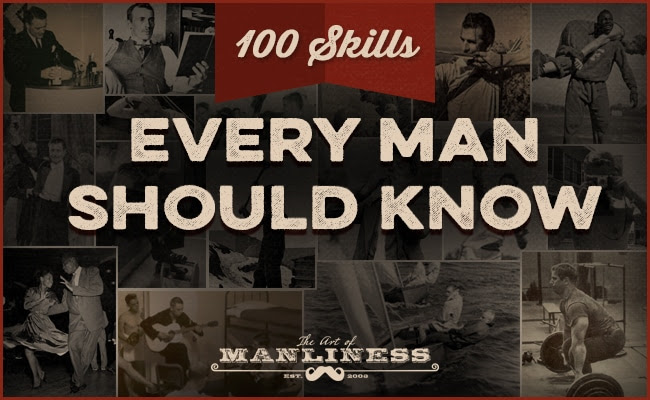
Gunnery Sgt Dan Daly won his 1st Medal of Honor with this rifle in the Boxer Rebellion. He later on won another one fighting the Haiti during the Banana Wars. He then went on to fight in WWI.
M1895 Lee Navy
| Lee Rifle, Model of 1895, Caliber 6mm | |
|---|---|

Winchester Model 1895 Lee Navy
|
|
| Type | Bolt-action rifle |
| Place of origin | United States |
| Service history | |
| In service | 1895–1907 |
| Used by | United States Navy |
| Wars | Spanish–American War Philippine–American War Boxer Rebellion Moro Rebellion |
| Production history | |
| Designer | James Paris Lee |
| Manufacturer | Winchester Repeating Arms Company |
| Produced | 1895 |
| No. built | Approx. 15,000[1] |
| Specifications | |
| Weight | 8.32 pounds (3.77 kg) |
| Length | 47.75 in (121.3 cm) |
| Barrel length | 28 in (71 cm) |
|
|
|
| Cartridge | 6 mm Lee Navy[2] |
| Action | Straight-pull bolt action |
| Muzzle velocity | 779 m/s (2,560 ft/s) |
| Effective firing range | 549 m (600 yd) individual target, 915 m (1,000 yd) massed target |
| Maximum firing range | 1829 m (2,000 yd) |
| Feed system | 5-round en bloc clip, internal box magazine |
| Sights | Blade front, U-notch rear, adjustable for windage/elevation |
The Lee Model 1895 was a straight-pull, cam-action magazine rifleadopted in limited numbers by the U.S. Navy and Marine Corps in 1895 as a first-line infantry rifle.[3]
The Navy’s official designation for the Lee Straight-Pull rifle was the “Lee Rifle, Model of 1895, caliber 6-mm“[3] but the weapon is also largely known by other names, such as:
- Winchester-Lee rifle
- Model 1895 Lee Navy
- 6mm Lee Navy
- Lee Rifle, Model of 1895
- etc.
It fired a 6mm (0.236-in. caliber) cartridge,[3] which used an early smokeless powder,[4][5] was semi-rimless, and fired a 135-grain (later 112-grain) jacketed bullet.[2][3]
The 6mm U.S.N. or Lee Navy Cartridge was also used in the navy version of the Colt–Browning Model 1895 machinegun.[2][6]
Contents
[hide]
Production history and development[edit]
By 1894, the U.S. Navy desired to adopt a modern small-bore, smokeless powder rifle in keeping with other first-line naval powers.
Naval authorities decided that the new cartridge should be adaptable to both rifles and machine guns. As the military forces began adopting smaller and smaller caliber rifles with higher velocity cartridges, U.S. naval authorities decided to leapfrog developments by adopting a semi-rimless cartridge in 6-mm caliber, with a case capable of holding a heavy charge of smokeless powder.[7]
On August 1, 1894 a naval test board was convened at the Naval Torpedo Station in Newport, Rhode Island to test submitted magazine rifles in the new 6mm Navy government chambering.[8]
Per the terms of the Notice to Inventors, the new government-designed 6mm U.S.Na.k.a. Ball Cartridge, 6mm was the only cartridge permitted for rifles tested before the Naval Small Arms Board.[8]
Both the ammunition and rifle barrels were supplied by the government; the barrels, made of 4.5 per cent nickel steel, used Metford-pattern rifling with a rifling twist of one turn in 6.5 inches, and were supplied unchambered with the receiver thread uncut.[2][8]
The rifle action was required to withstand the firing of five overpressure (proof) cartridges with a chamber pressure of 60,000 psi.[8]
In the first set of service trials, the naval small arms board tested several submissions, including the Van Patten, Daudeteau, Briggs-Kneeland, Miles, the Russell-Livermore Magazine Rifle, five Remington turnbolt designs (all with side-mounted magazines), and the Lee straight-pull.[9]
In a second set of trials the Model 1893/94 Luger 6-mm Rifle[10] and the Durst rifle were also considered, along with a Lee turning-bolt design.[9]
The Durst prototype fractured the receiver in firing and was withdrawn from the test, while the Luger Rifle performed excellently. Luger’s submission had only one major disadvantage: it failed to meet government specifications, having been chambered in a non-standard rimless 6mm cartridge.[9]
The Lee turning bolt design was considered to be a good one, but marred by its magazine system, which the Small Arms Board found to be problematic.[9]
The Board thought so highly of the Luger Rifle that it recommended purchase of either a prototype or an option to purchase the rights to manufacture.[9]
Apparently this never came to pass, as Luger not only declined to submit its design in the Navy’s government 6mm chambering, but withdrew from the third round of the service trials.[9]
The Lee straight-pull rifle with its charger-loaded magazine was chosen as the winner in repeated small arms trials, and was selected for adoption by the U.S. Navy in 1895 as the Lee Rifle, Model of 1895, caliber 6-mm, a.k.a. the M1895 Lee Navy.[7][9]
First contract[edit]
The first naval contract for the M1895 was let to Winchester for 10,000 rifles in January 1896 (serials 1–9999).[7][11]However, deliveries of the initial shipment of 10,000 rifles were not completed until 1897, owing to delays caused by manufacturing issues, as well as contract changes imposed by the navy.[12]
The latter included a significant change in ammunition specification, which required extensive test firings followed by recalibration of the sights.[12]
Of the 10,000 rifles produced under the first contract, 1,800 were issued to the U.S. Marine Corps.[13]
Marine battalions scheduled to be equipped with the 6 mm Lee rifle did not begin to receive their new rifles and ammunition until 1897, two years after adoption of the cartridge and rifle.[14]
Colonel-Commandant Charles Heywood of the Marine Corps reportedly refused small initial allotments of the 6 mm Lee rifle to the Corps. Until he was given assurances that the Corps would be immediately issued at least 3,000 Lee rifles, improved target ranges, and most importantly, enough ammunition for Marine units to continue their existing marksmanship program.[15]
Despite this threat, the September 1897 report of the Marine Corps Quartermaster to the Secretary of the Navy urgently requested a minimum additional $10,000 in funding to purchase sufficient 6 mm ammunition to allow Marines to conduct live fire and target practice with the Lee rifle.[16]
The report warned that, except for drill practice, enlisted Marines were “entirely unfamiliar with the use of this arm”, since all target practice still had to be conducted using the old single-shot Springfield and .45-70 black-powder ammunition.[16]
Rifles with a serial number below 13390 (approx.) were made prior to December 31, 1898.[13] Additional smaller purchases were subsequently made to replace lost weapons, mostly in response to a fire at the New York Navy Yard which damaged or destroyed about 2,500 rifles; around 230 rifles were condemned as unrestorable.
The additional small quantity purchases by the Navy as well as all sporting models fall into the 10000–15000 serial range, purchased between the two major contracts.
Some confusion arises as to production dates for the sporting rifles as many of the commercially manufactured and numbered receivers (not USN marked) were not made into complete rifles until 1902, and sales continued until 1916.
Military rifles have 28-inch (71-cm) barrels and navy anchor stamp, while rifles made for civilian sale have 24-inch (61-cm) barrels and no anchor.[13][17]
Second contract[edit]
A second contract was let on February 7, 1898 for an additional 5,000 rifles[13] at $18.75 each. This second contract (serials 15001 to 20000) began delivery in August 1898 and was completed in December 1898.
Reliability in the field[edit]
Overall, the Lee had a reputation for reliability in the field, though some issues were never overcome during the rifle’s relatively short service life.[3]
Beginning in 1898, during the Marine expeditionary campaign in Cuba, reports emerged from the field criticizing the floating extractor design.[3][18]
The firing pin lock and bolt-lock actuator were relatively fragile, and would occasionally break or malfunction, while the tension in the en bloc cartridge clips proved difficult to regulate, occasionally causing failures to feed.[3][18][19]
Design and operation[edit]
Magazine system[edit]
The Lee’s magazine system was improved over the prior navy rifle, the M1885 Remington-Lee, by incorporating a charger-loaded magazine system and an action capable of handling high-velocity, small-caliber smokeless cartridges. Designed by inventor James Paris Lee.
the rifle weighed 8.3 pounds (3.7 kg) and was about 48 in (122 cm) long.[3] It was the first American military rifle to be loaded by charging an en bloc clip or charger of five 6mm cartridges into the rifle magazine, similar to the Mannlicher charger system.[11]
Lee later claimed in an unsuccessful lawsuit that his single-row charger-loaded magazine patent was infringed by von Mannlicher, but most historians agree that Mannlicher and Lee independently developed their en bloc magazine systems along separate but parallel lines.
After inserting the clip, the charger was then given a second push to ready the first round for chambering.[11]
Closing the bolt stripped off each round in succession, feeding the next cartridge into the chamber.
The clip itself dropped free from the magazine when the first cartridge had been loaded.[3][7][11]
Unlike the M1892 Springfield (Krag) and the later M1903 Springfield rifle, the Lee straight-pull did not have a magazine cut-off to enable the cartridges in the magazine to be held in reserve in keeping with the prevailing small arms military doctrine of the day.
The Chief of Ordnance considered the Lee clip to be superior to either the Mauser stripper clip or the Mannlicher clip, as cartridges were not required to be stripped from the clip into the magazine (like the Mauser ‘stripper clip’ system), yet the Lee clip was not an essential part of the magazine (like the Mannlicher system).
Since it dropped out after the first cartridge was loaded, and since single cartridges could be loaded into an empty or partially loaded magazine to replace cartridges fired.[2][7]
This conclusion was in conflict with the Naval Small Arms Board, which did consider the Lee clip to be an essential part of the magazine.[9]
When specifying the requirements for its new service rifle, the Navy emphasized that it desired a repeating rifle loaded by means of chargers or clips, but “since the conditions of service may require the use of loose cartridges, or may result in the disabling of the magazine.
It is desirable that the small arm be susceptible of use as a single loader, and that the magazine be capable of being replenished by single cartridges.[9]
The new Lee rifle and its magazine met all of these requirements, enabling a rifleman in an emergency to use the loose cartridges taken from loaded belts supplied to machine gun crews for the 6 mm Colt–Browning machine gun.[2][7]
Bolt mechanism[edit]
Along with the M1885 Remington-Lee and the M1892 Springfield, the M1895 Lee was one of the first infantry weapons adopted by U.S. forces to be equipped with a repeating action.[3]
To operate the straight-pull mechanism, the operating handle is first pulled up at an angle to disengage the bolt and its wedge lock, then pulled sharply to the rear to extract and eject the spent case.[3]
Pushing forward on the bolt handle strips a round from the magazine; as the bolt is slammed home, the bolt’s wedge lock seats into place, the firing pin is cocked, and the fresh cartridge is seated in the chamber.[3]
Once the M1895 is cocked, the rifle’s bolt cannot be retracted unless the bolt-release lever is pushed downward.[3] This prevents opening of the action caused by an inadvertent bump or contact to the bolt handle.
The rifle has a safety located on the top of the receiver, which is released by pushing down with the thumb on the safety button.[3]
Unlike many other military rifles of the day, the Lee was not fitted with a turning bolt.[3]
Though frequently described as a straight-pull action, the M1895 Lee actually uses a camming action in which a steel wedge or locking block beneath the bolt is forced into a recessed area in the receiver.[3][20]
Pulling the operating handle back causes the bolt to rock back and upwards, freeing a locking stud on the receiver and unlocking the bolt.[3]
The firing pin cocked on final closing where the resistance would be overcome by the forward inertia of closing the action.
Once the rather odd “up and back” bolt movement was mastered, and as long as the action was clean and well-lubricated, it worked fairly well, though the slightly inclined opening stroke proved awkward for some men when the rifle was operated from the shoulder.[3]
Despite this, the Navy’s Chief of Ordnance noted with approval that the Lee rifle could be fired “with great rapidity”,[21] achieving a rate of fire considerably faster than most existing turn-bolt rifles of the day.[7][22]
Sights and other features[edit]
The M1895 was equipped with a ladder-type rear sight adjustable to a maximum of 2,000 yards, determined by actual firing at Winchester in March 1896.[12][23]
Because of the relatively high velocity and flat trajectory of the 6mm Lee cartridge, authorities calibrated the sights at their lowest setting with a point-blank or dead aim range of 725 yards (663 m).[23][24]
The latter was intended for use on targets at all ranges from point-blank to 700 yards.[23][24] The single battle setting was intended to discourage individual soldiers or marines from adjusting their sight elevation unless firing at mass targets at extreme ranges, in which case officers would give commands for ranges to be set in such situations.
Owing to the necessity of supplying the Navy with rifles as soon as practicable, no provision for drift (windage) was included in the rear sight.[12]
The prominence of the front sight and its exposure to damage led to the adoption of a sheet metal front sight cover for the 10,000 rifles in the original order.[12]
The front sight cover was browned (blued) to reduce glare. Each rifle was tested at Winchester for accuracy by firing a group of three shots at 50 yards, any rifle not showing the desired accuracy was returned to the line for adjustment, which sometimes involved restocking the entire rifle.[12]
The rifle was equipped with a firing-pin lock on the left side of the receiver, which acted as a safety. Pushing down on the slide-type lever unlocked the firing pin striker and made the weapon ready to fire.[11]
With its slim-contour 28-inch (710 mm) barrel, the rifle was slightly muzzle heavy. With practice it could be rapidly fired, recocked, and reloaded without taking the rifle from the shoulder.
Contemporary reports and subsequent tests indicate that the M1895 and its ammunition were exceedingly accurate: target groups approaching a minute of angle at 100 yards were not unusual with individual rifles.[25]
The M1895 was normally issued with a sling, bandoliers, and a modern 8.18-inch (208mm) knife-type bayonet. Individual sailors and marines were issued a black leather belt with adjustable cross suspenders, fitted with twelve black leather ammunition pouches.[15][26]
The Lee Navy bayonet was the forerunner of short pattern bayonets still in use today.[27]
Ammunition[edit]
In December 1894, after a series of test evaluations with both rimmed and rimless 6mm cartridges, the U.S. Navy adopted the 6mm U.S.N. or 6mm Lee Navy cartridge.[2][9]
It was the first U.S. military round to use a metric caliber in its official designation,[2] the first cartridge designed for use in both rifles and machine guns,[6] and the smallest-caliber cartridge to be adopted by any military power until the advent of the 5.56×45mm NATO cartridge in 1964.[28]
The original 6mm ball loading was supplied by Winchester, and used a roundnosed, cupro-nickeled steel-jacketed lead-core bullet with a total weight of 135 grains.[2][29]
In March 1897 a new military loading was adopted using a 112-grain (7.3 g) round-nose, copper-jacketed (FMJ) military loading developing 2,560 feet per second (780 m/s)[29][30] and 1,629 ft·lbf (2,209 J) of energy at the muzzle.[30][31]
Besides providing increased velocity and a flatter trajectory, the primary reason for the change in cartridge and bullet design was to reduce chamber pressures and extend the life of the rifle barrel: the new 112-grain loading with its copper-jacketed bullet gave an average barrel life of 10,000 rounds as opposed to only 3,000 for the 135-grain steel-jacketed load.[12]
Ordnance authorities specified a slightly slower rifling twist for the new loading – one turn in 7.5 inches (18 cm).[30] At some point during later production, this rifling was again changed to one turn in 10 inches RH (25 cm).[32]
The U.S. 6mm Lee Navy (6mm U.S.N.) cartridge used by the U.S. Navy and Marine Corps was initially supplied by Winchester Repeating Arms (WRA) and later, the Union Metallic Cartridge Company (UMC).[2]
The rifle powder was Rifleite, a nitrocellulose flake powder supplied by a British company, the Smokeless Powder Co. Ltd.[4]
The cartridge was semi-rimmed, and was designed to function in machine guns such as the M1895 Colt–Browning as well as in infantry rifles.[33] Intended for primarily for shipboard use against enemy naval forces in small boats,
the 6mm Lee had considerably more penetrating power than the U.S. Army’s .30 Army (.30-40 Krag) cartridge, and could perforate 23 inches (58 cm) of soft wood at 700 yards (640 m), a single 3/8 inch (9.5 mm) thick steel boiler plate at 100 feet (30 m), or a 0.276-in. (7 mm) plate of chromium steel (no backing) at 150 feet.[29][30]
Another advantage to the 6mm cartridge was in the reduced weight of the ammunition: 220 6mm cartridges weighed approximately the same as 160 cartridges in .30 Army caliber.[34]
The basic combat ammunition load of an 1898 naval bluejacket or marine was 180 rounds of 6mm ammunition packed five-round chargers (clips), and carried in black leather ammunition pouches.[9][9][15][26][35][36][37]
Outfitted in this manner, a navy bluejacket or marine could carry considerably more ammunition than that of the typical Army trooper of the day, who usually carried 100 rounds of .30 Army ammunition in individual cartridge loops on his Mills canvas cartridge belt.[15]
However, the 6mm U.S.N. cartridge may have been too advanced a concept for the technology of the day.
The Navy experienced continued problems with the Rifleite smokeless powder used in the cartridge, which appears to have varied in consistency from lot to lot, while becoming unstable over time.[2][31]
These problems were exacerbated by the custom of keeping ammunition aboard ship for long periods under conditions of high heat and humidity.[2][31]
After some use, many Lee rifles developed bore and throat erosion,[23][31] and metal fouling due to unburned powder compounds, a problem intensified by substandard internal barrel finishing at the factory.[38]
The M1895 Lee was also the only military rifle to use Metford rifling, which British authorities had discarded because of its tendency to wear too easily when used with the smokeless powders of the day.[2][39]
[edit]
The M1895 Lee was carried aboard Navy ships for use by naval armed guards (bluejackets) and landing parties, and was the standard service rifle for enlisted Marines, both seaborne and guard forces.
Fifty-four USN Lee rifles were recovered from the USS Maine, which was sunk in Havana harbor in 1898.[13][20][40] These were eventually sold to Bannerman’s, a military surplus dealer.[20][40]
Surviving examples seen of the confirmed Maine rifles have pitted receivers, which would be logical considering the salt water immersion in Havana Harbor.[40]
After the outbreak of the Spanish–American War, the M1895 was issued to marines of the First Marine Battalion aboard the naval transport USS Panther, commanded by Lieutenant-Colonel Robert W. Huntington.[36]
As far as is known, all Marine companies involved in the Cuba combat operations were equipped with the 6 mm Lee rifle.
In addition to service with the First Battalion, additional rifles were later distributed by navy quartermasters to elements of free Cuban forces revolting against the Spanish government.[36][41]
The Marine assault force had only just been issued their Lee rifles, and enlisted men aboard the Panther were hurriedly given lectures on operating and field-stripping their newly issued rifles aboard ship, along with ten 6 mm rounds each to fire for familiarization purposes.[36][41][42]
During a four-day call at Hampton Roads, Virginia, and later during a two-week stopover at Key West, Florida Lt. Col. Huntington ensured that all enlisted Marines aboard the USS Panther underwent target practice on the beaches with the Lee rifle, as well as marksmanship training and small-unit battle drills.[36][42]
This last-minute opportunity for target practice and training proved fortuitous, as Cuban guerrillas later handed Lee rifles had some initial difficulty operating and using them, while Lt. Col. Huntington’s Marines had no such problems.[36][42]
The first major combat use of the M1895 occurred during the land campaign to capture Guantánamo Bay, Cuba from June 9–14, 1898 with the First Marine Battalion, in particular at the battles of Camp McCalla and Cuzco Wells.[36][42]
During the battle of Cuzco Wells, Marines using the M1895 Lee effectively engaged concentrations of Spanish troops at ranges up to 1,200 yards, using volley fire against groups of enemy soldiers while their officers called out the range settings.[36][41][42]
Though some problems were noted with the new rifle,[18] the flat ballistics,[26] accuracy and rate of fire of the M1895 and the light weight of its 6 mm ammunition proved to be of considerable benefit during offensive infantry operations over mountainous and jungled terrain against both Spanish regulars and loyalist guerrilla forces.[42]
The extra cartridges proved useful when early ammunition resupply from Navy ships was disrupted at the outset of the Guantanamo operation, allowing Marines to continue their assault even while individually resupplying Cuban rebels who had run short of ammunition.[43]
After the battle of Cuzco Wells, the surviving members of the retreating Spanish garrison informed the Spanish General Pareja at Ciudad Guantánamo that they had been attacked by 10,000 Americans.[44]
The M1895 would see considerable action in the Pacific during the Spanish–American War and the early stages of the later Philippine–American War with U.S. Navy and Marine personnel.
During the Moro Rebellion of 1899–1913, it was reported that some Marines preferred the M1892/98 Springfield (Krag) rifle and its .30-caliber ammunition to the M1895 Lee Navy and its 6 mm U.S.N. cartridge, believing the latter to have inadequate shocking or stopping power against frenzied bolo-wielding Moro juramentados, who attacked from jungle cover at extremely close distances.[45][46]
In this situation, the 6 mm Lee bullet may have overpenetrated without causing sufficient shock and trauma to the enemy, a situation which the Chief of the Bureau of Naval Ordnance had foreseen as early as 1895, when he acknowledged the concern that “the wounds produced by small-caliber bullets will frequently not be sufficient to put the wounded out of action and their shock will not stop the onset of excited men at short range”.[7][47][48]
On the other hand, the Marine Legation Guard, which used the 6 mm U.S.N. cartridge in the defense of the foreign legations in Peking during the Boxer Rebellion of 1900, apparently had no such criticisms.[49]
U.S. forces equipped with the Lee rifle in the first (Seymour) relief expedition advancing from Tientsin to relieve the Marines at Peking were able to transport some 10,000 rounds of 6 mm ball for the riflemen as well as a Colt machine gun crew, and consequently never ran short of ammunition.
Unlike other Western forces, who were forced to capture the Imperial Chinese arsenal at Hsiku to find enough cartridges to continue fighting.[50]
During the same expedition, Marine sharpshooters using the Lee Navy rifle managed to eliminate the gun crews of two heavy artillery batteries using only rifle fire.[50]
However, the service life of the M1895 as a first-line infantry weapon was soon to end.
In December 1898, a board of officers from the Army, Navy, and Marine Corps officers recommended that all services adopt the .30 Army cartridge and the small arms and machine guns chambered for it.[31][51][52]
The board did acknowledge that the rimmed .30 Army round was less than ideal when used in modern machine guns, and that the decision to adopt the .30 Army for the Navy and Marine Corps might be postponed until a rimless version of the .30 Army had been developed.[52]
The board’s recommendations were later adopted by the War Department.
In the end, the Navy and Marine Corps decided not to wait. As early as November 1899, the Navy placed its first contract for 1,000 Model 1892/98 “U.S. Army magazine rifles” in .30 Army (.30-40 Krag) caliber,[31] with the first M1892/98 rifles issued to the newest pre-dreadnought battleships Kearsarge and Kentucky.
New contracts for M1892/98 rifles were let as the U.S. Navy continued to expand, though the M1895 Lee and its 6 mm cartridge would continue to see service aboard Navy vessels well into the turn of the century.[53]
The U.S. Marines continued to use the M1895 Lee rifle until January 1900, when they received Model 1892/98 rifles in exchange (Philippines and Far East Marine battalions were the first to receive the new rifle and ammunition).[54]
The Navy continued to use the M1895 Lee as its primary small arm through at least 1903.[53] From 1910 to 1911, both the M1895 Lee and the M1892/98 “Krag” service rifles were supplanted in Navy and Marine Corps service by the new M1903 Springfield rifle in .30-06 caliber,[13][55] though the M1895 Lee would remain in service aboard some ships of the fleet into the 1920s, albeit as a secondary (drill practice) arm.
The other GI's other Best Friend!

No I am not talking about Advil or Drive on pills! Which is what we called them when I was in the Cav. No instead it is the……

YES the Poncho Liner!
(Hell my Ex Wife got mine in my first divorce. She also got the house, car and a pile of money. But I do miss my Poncho liner!)
Which should tell you something. Anyways here is a much better written article about it than I could do.
Enjoy!
Grumpy

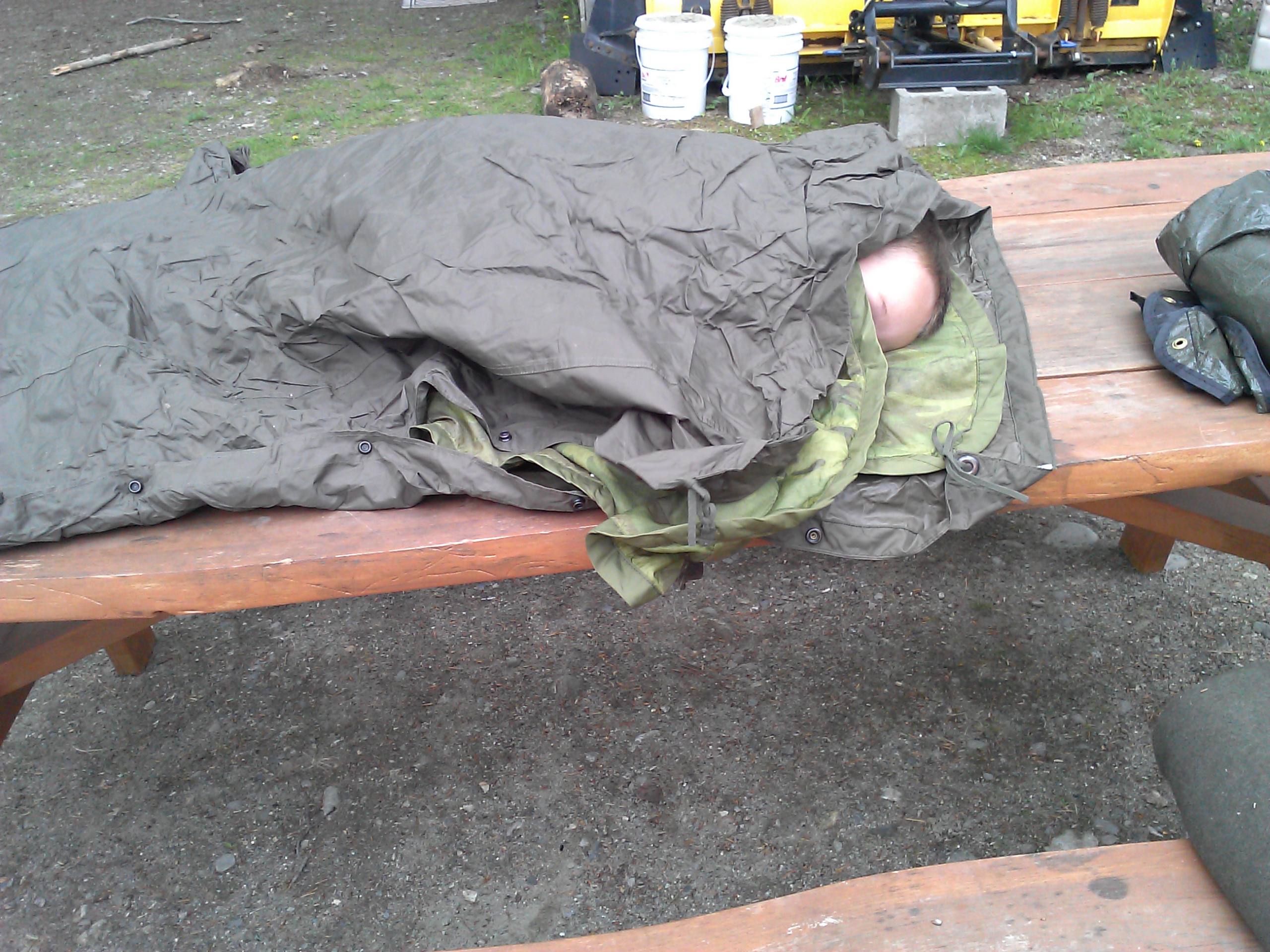
There have been some amazing military innovations over the years: freeze-dried food for MREs, jet aircraft, rail guns, and the soul-sucking website, Army Knowledge Online.
But none of these compare to the simplest, most wonderful invention known to mankind: the poncho liner, affectionately known by all those who have felt its life-giving warmth as the “woobie.”
Ask any soldier or Marine, especially those in the infantry, how he feels about his woobie, and his eyes will light up and then mist over as he waxes lyrically over the virtues of this item.
Hard-bitten combat veterans grow poetic and wistful, declaring their love for this piece of equipment. If you don’t believe me, read the Amazon reviews. It is perhaps the single most-loved item in the armed forces.
What is it, and why does it inspire this fanatical devotion?
The “liner, wet weather, poncho” as it’s officially called, consists of two layers of nylon surrounding a polyester filling, sewn up along the sides and crosswise to ensure a very tough and durable piece of equipment.
Army logistics manuals fail to say what magic spells are cast over poncho liners when they are made to make them so efficient at trapping heat in and keeping the cold out.
They were originally produced in the 1960s, during the Vietnam War, when U.S. soldiers and Marines were engaged in jungle fighting. The troops needed a lightweight poncho to keep them relatively dry in the wet jungles and rice paddies, but also something to keep them warm during the cool nights.
Thus the poncho and poncho liner were born. While the poncho liner was almost an afterthought to the poncho, it was the liner that would steal troops’ hearts.
The distinctive three-color camouflage pattern, that until only recently was the hallmark of all poncho liners, came from using recycled camouflaged parachute material left over from World War II.
Even though the troops were wearing green fatigues, their poncho liners were of the mottled camo color. This continued even after recycled parachutes ceased to be used for the nylon covers of the poncho liners.
Perhaps some of the grit and determination from the airborne troops of World War II leaked out from their chutes into the liners. Who can say? But upon their introduction, they became a huge hit.
So why is it called a woobie? What kind of silly name is that for a piece of high-speed, military-grade equipment?
The origins of the term are lost in the mists of time, but many theories abound. One theory goes that it comes from the phrase, “Because you would be cold without it,” where “would be,” evolved into woobie.
A similar version has it called a “willbie,” because, “It will be what keeps you from freezing.”
Another theory comes from a bit of pop culture, where the term came from the 1983 Michael Keaton movie, “Mr. Mom,” in which the child calls his security blanket his woobie. Is this a case of the military mimicking pop culture or vice versa?
Perhaps we will never know. Judging from the internet comments from veterans of the 1970s and 1980s, the term did not come into being until the 1990s, after the movie came out.
Regardless, veterans of Afghanistan and Iraq have given the term credence, which is impressive, considering how silly it is.
No matter what you call it, is it really like a security blanket?
The answer is a resounding, “Hell yes!” A mere glance at veterans’ internet forums show a myriad of uses for this simple item.
It can be used as a blanket, pillow, shelter, hammock, camo hide for concealment, jacket liner, seat cushion, mattress — when you are sleeping on the ground, anything helps — and something soft to hold onto when you’re far away from home and everything’s going to … well, you know, the stuff that hits the fan.
It is remarkably resilient to extreme heat and cold, dries quickly when wet, and most importantly, can be squished up into a tiny ball that takes up barely any room in your rucksack and adds virtually no weight. I am still convinced it is magical.
Veterans often hang on to their woobies well after they leave the military, preferring to claim it as a “field loss” and pay the charges rather than turn it in.
One vet claimed his woobie had outlasted several marriages, which probably says more about the stresses of military life than it does for the woobie, although many claim that woobies go missing in divorces.
Young men in the military claim that “girls love it and think the term woobie is cute,” and so it is often used to begin a romantic relationship.
Kids love the woobie because it is light, soft, reminds them of their mom or dad, and can be used as a cape when running around pretending to be a superhero.
Many woobies get passed on through generations of veterans, with some troops deploying to Iraq or Afghanistan with their dads’ woobies from Vietnam.
Is it odd that there is so much love for such a simple item? Perhaps, but there is much in the military that might seem odd to people outside of it.
The woobie is synonymous with comfort, and after a long, wet day on patrol, there’s nothing better than to crawl into something warm, dry, and soft, and have that moment of relief.
Far from home on deployment, pulling your woobie around your shoulders gives a sense of safety that is quite often absent.
Simply put, it is the greatest thing to ever be issued by the U.S. military.
The woobie: never leave home without it.
|
| September 1, 2015 How To: Holiday, Manly Skills, Outdoors, Survival How to Disappear in the Wilderness: A Natural Camouflage Tutorial
Editor’s Note: This guest post by Creek Stewart first appeared at willowhavenoutdoor.com. The Base Layer

Get it on nice and thick; a substantial, wet base layer is critical. 
I had to go Garden of Eden style in these shots with a Burdock leaf for the sake of decency. Duff and Forest Debris
Now, Disappear

By the way, my skin feels amazing. I think I’ll start charging for “Natural Camo Full Body Treatments.”
ConclusionNext time you find yourself being chased by a Predator from another planet, don’t forget what you learned here: get naked, mud up, and roll on the ground. In less than 5 minutes you’ll be an unrecognizable fixture in the forest around you. |
| September 28, 2015
It’s been fodder for many a heated debate among men for centuries.
What skills should every man know?
A vast amount of ink and e-ink has been spilled on the subject. But why?
Part of being a man is being competent and effective in the world. To do that, you’ve got to have skills. A man wants to know (or at least feel like he knows) that no matter what situation he’s placed in, he’ll be able to handle himself — to act rather than be acted upon. Hence our incessant drive to figure out what skills we’ll need to know in order to demonstrate confidence and capability in our manly roles as procreators, protectors, and providers.
For primitive man, this needed skill-set was clear and relatively narrow, largely revolving around the jobs of fighting and hunting.
The breadth of skills needed today, however, is much wider. The modern man must be both a warrior and a diplomat, a woodsman and a scholar. We need both hard skills and soft skills; skills we use every day and skills we keep in the back pocket, just in case.
We’ve covered many of these skills over the years on the Art of Manliness, and so figured it was time to add our contribution to the collective cultural enterprise of figuring out which skills a well-rounded, grown man should have. Below you’ll find the AoM list of 100 skills every man should know.
1. Tie a Necktie
Even in our casual culture where hoodies are appropriate attire for billionaire CEOs, every man should know how to tie a tie. Funerals, weddings, and job interviews are just a few occasions when a sharp necktie is appropriate, and you’ll be attending plenty of those during your adult life. You don’t want to be the 30-something who needs to ask his mom to tie his tie for him.
2. Build a Campfire
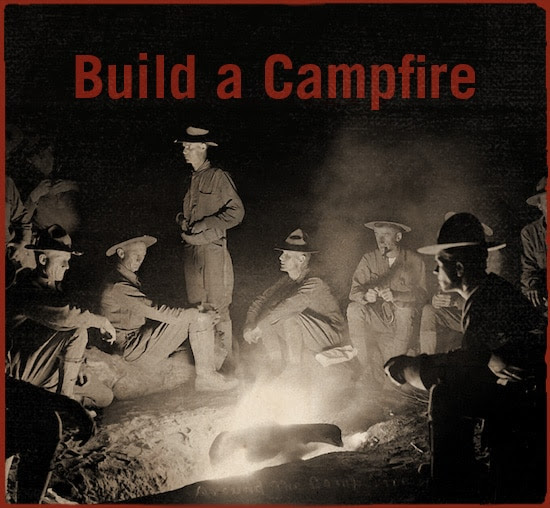
There’s a primordial link between men and fire. While it’s no longer necessary for our survival, man’s connection to fire still exists. It’s both exhilarating and calming, dangerous and assuring. There’s nothing like sitting around a crackling fire under a starry sky while poking the embers with a stick and meditating on the big questions in life. Just for those reasons alone a man should know how to build a fire. But it’s also vital to know so you can build a fire while camping in order to cook a solid meal for yourself and those with you. Using Duraflame logs is a cardinal sin that will automatically send you to outer darkness, where there is wailing and gnashing of teeth.
3. Hang a Picture
Being asked to hang a picture on the wall may be perhaps the world’s most common “honey-do.” While not necessarily an exact science, knowing some basics about wall hangings, and where to place prints on the wall, will ensure that your home has charm that will knock the socks off visiting dates and parents, and greatly please your main squeeze.
4. Shine Your Shoes
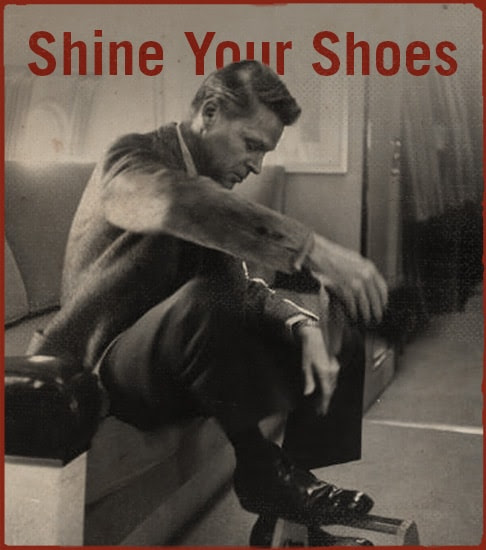
A pair of shoes with a mirror shine can add the finishing touch to a sharp get-up. And besides keeping your shoes in tip-top shape, the act of shoe shining is a satisfying, manly ritual that calms the mind. The repetitive strokes of the shine brush coupled with the warm smell of shoe shine polish is enough to put you into a meditative state. To go the extra mile, build your own shoe shine box.
5. Treat a Snakebite
Since the very dawn of man, snakes have been one of our greatest enemies. They slither and sneak and hiss, and just are no good for anyone. Should you encounter a poisonous variety of snake (learn how to identify them here!), it’s in your best interest to know how to treat being bitten. Hint: most of the old wives’ tales are just that, so don’t go trying to suck the poison out.
6. Read a Book

1) Open book. 2) Read words. 3) Close book. 4) Move on to next book. Reading a book seems like a pretty straightforward task, doesn’t it? And in some cases, it is. If you’re reading purely for entertainment or leisure, it certainly can be that easy. There’s another kind of reading, though, in which we at least attempt to glean something of value from the book in our hands (whether in paper or tablet form). In such cases, there are certain techniques you must master to be able to dive deeper into the text and suck out all the marrow.
7. Survive a Bear Attack
While bear attacks are rare, a man should always be prepared. Whether you’re camping for a weekend, or simply out for a morning hike, you never know when you’ll need this information. Believe it or not, just weeks after I compiled the research for our AoM guide on the topic, I encountered not one, but two black bears on a popular trail in Rocky Mountain National Park. It does happen. I was surprisingly calm with this useful knowledge at hand, and I felt confident I could have taken down those black bears should necessity have called. Alas, it didn’t, and I mourned the loss of the new rug I was looking forward to for my living room.
8. Wet Shave
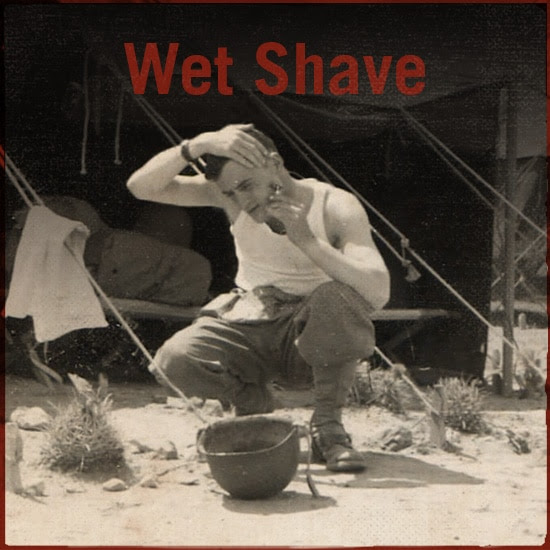
Electric shaving is fast and easy and the multi-bladed razors can give you a pretty close shave. But nothing beats the manly ritual of shaving with a safety razor or straight razor. Traditional wet shaving adds an element of skill back into what has become a mindless grooming activity. It makes you mindful and present. Plus, old school wet shaving is much cheaper than using the fancy multi-blade cartridges. A blade will only set you back about 25 cents. Feel manly and save money? It’s a win-win proposition.
9. Parallel Park
In the suburbs you enjoy endless drive-in parking in the giant lots in front of big box stores. Make a trip downtown and it’s a different story. Yeah, there are parking garages, but most of the parking is on the street next to the curb (not to mention it’s also the cheapest), meaning you need to know how to parallel park. You don’t want to be the guy who holds up traffic because he’s constantly backing up and moving forward after multiple failed attempts.
10. Paddle a Canoe
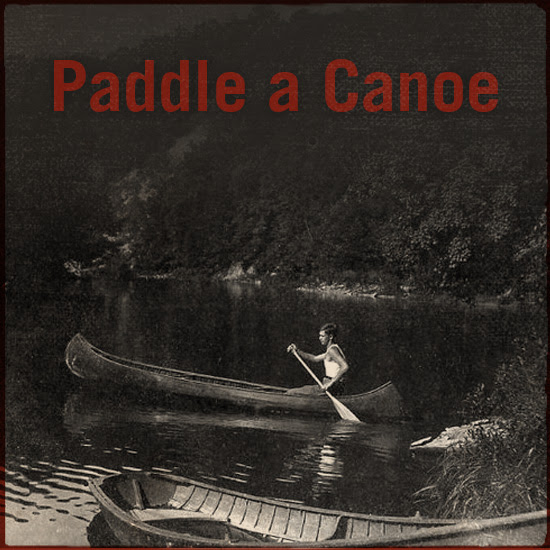
Paddling lazily across the water is one of man’s great joys. Whether with your gal on a date, or just enjoying nature on a solo outing, there are few better recreational activities. While paddling might seem as natural as riding a bike, it takes a certain level of skill to deftly captain a canoe. Don’t be that guy/couple who can’t make headway because they paddle inefficiently or even tip over and end up in the water.
11. Negotiate/Haggle
Depending on where you are in the world, negotiation is either a part of everyday life or an uncomfortable practice that’s consciously avoided whenever possible. But here’s a truth that many of us, especially those of us living in the Western world, don’t always consider: whether or not you realize it, many of your commercial transactions can be negotiated. From hotel rooms, to rental cars, to complex business deals, knowing how to haggle can save you (or your business) a boatload of money. It’s awkward, sure, but with practice, you’ll get more confident and capable in the deft art of negotiating.
12. Fix a Leaky Faucet

Drip. Drip. Drip. It can drive a man crazy in the middle of the night when he’s trying to sleep. It can also cost you money in the long run, in both water and handyman bills. While plumbing is not always a DIY project, fixing a leaky faucet is generally a pretty simple task. With a couple tools, a trip to your local hardware store, and this guide from This Old House, you’ll restore your sanity in no time.
13. Treat a Burn
Burns can happen just about any time and any place. Spilled coffee, mischievous campfire, over-heated car engine — our world is rife with potential for harm through heat. Should you find yourself with a first or even second-degree burn, you can almost always treat it yourself. A couple tips: You want to slowly cool the affected area with cool, not icy, water. Make sure to clean the burn and apply an antibiotic ointment, and don’t pop the blisters, as that increases the infection risk. More info about treating burns can be found here.
14. Tell a Joke
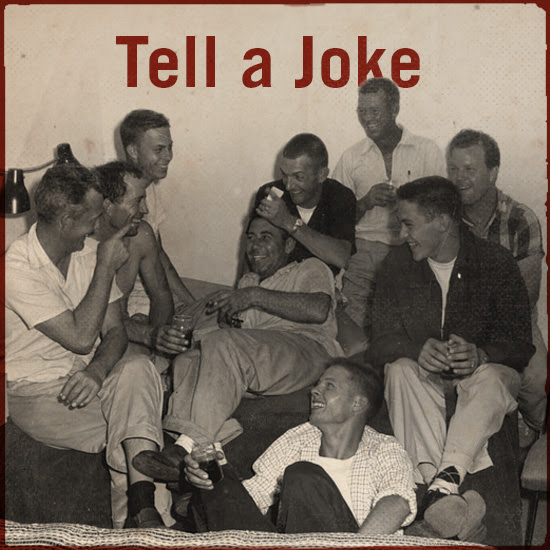
In the age of dank memes and viral videos, the art of the well-told joke is a dying skill. Knowing how to make people laugh without resorting to showing a guy kicked in the nuts on your smartphone will set you apart from the pack. Plus, when you’re out in the middle of the woods and cell phone reception is non-existent, knowing how to tell a well-timed joke will be some of the only entertainment you have.
15. Predict the Weather
If you regularly watch your local news for the weather forecast, or check your smartphone for it, you know how often they are flat out wrong. While forecasting has come a long ways, some of the most accurate tools are the oldest. Barometers, for instance, can tell you what the weather will be like in the next 24-48 hours as well as any professional forecast. Beyond scientific instruments, even old proverbs — like “Red sky at night, sailors delight; red skies in morning, sailors take warning” — have many kernels of truth contained within. Soon enough your own predictions will be beating that of your local weatherman.
16. Do a Deadlift Properly
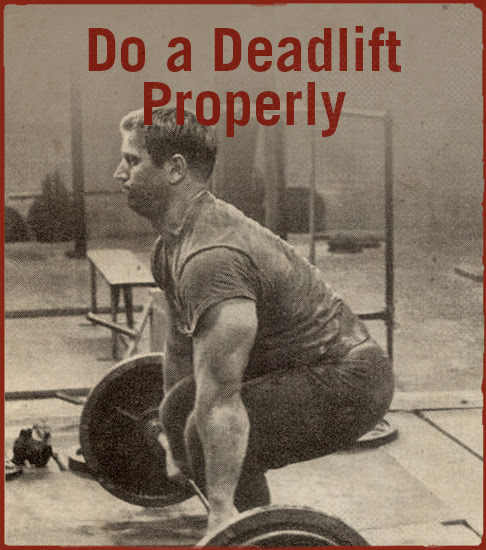
The deadlift trains the muscles that allow you to perform one of the most basic of human movements — lifting stuff off the ground. Besides the squat, no other exercise provides as much practicality as the deadlift. And it just feels plain awesome to hoist 400+ lbs off the ground with a barbell.
17. Recite a Poem From Memory
There’s something about reciting a poem from memory that’s different from just reading it over and over again. The words become a part of you. They may not be your original words, but when you say them from memory, it feels like they’re coming from the heart. Reciting a poem from memory can provide you and others inspiration and consolation in trying times. Plus, knowing how to effortlessly sprinkle in a few lines from a poem in a conversation can make you appear a bit like the Most Interesting Man in the World.
18. Grill With Charcoal
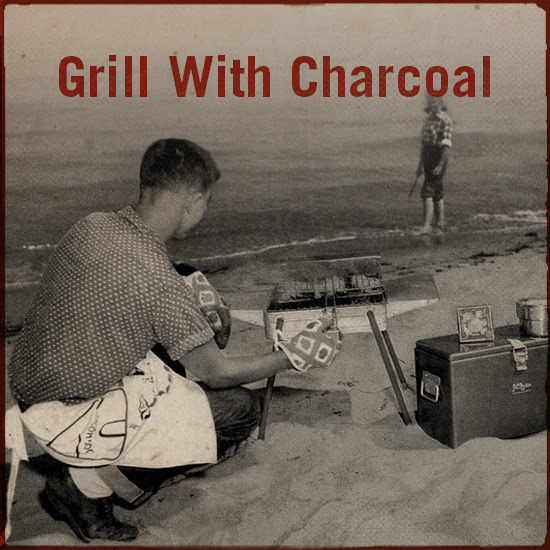
While the propane barbecue grill has only been around since the 1950s, men have been grilling with charcoal for thousands of years. Rather than just pushing a button for your fire, charcoal requires a little more skill and care, and according to most folks, makes for a better-tasting product as well. Bone up on lighting a charcoal grill.
19. Perform CPR
Some emergency situations are so urgent that calling 911 and waiting for paramedics will be too late. One of those is in the case of heart attack or other scenario where someone becomes unresponsive and is having trouble breathing. Believe it or not, one-quarter of Americans say they’ve been in such a situation. Don’t be caught unprepared. While you should know conventional CPR, you should also be aware of the new hands-only method which can be used on teenagers and adults.
20. Throw a Spiral

Whether you’re playing catch with your kiddos on a Saturday or playing all-time QB at this year’s Thanksgiving Turkey Bowl, you’ll need to know how to throw a nice, tight football spiral.
21. Sew a Button
You’re hastily getting ready for work, and as you button up your nice oxford shirt, one pops off. You’ve known it was loose, and that this reckoning would come. What is a man to do? Sew it back on, of course! While sewing may seem like a skill purely in the ladies’ realm, knowing this simple clothing fix can come in mighty handy when you’re in a pinch.
22. Split Firewood

Yes, most of us have central heating to keep our houses warm during the winter, but there’s nothing like the warm glow of a fireplace fire during the winter months to keep you toasty. But to get the big logs to fit into your fireplace, you’ll need to make them smaller by splitting them. And let’s be honest, splitting wood isn’t so much about lowering your heating bill, but rather about the satisfaction a man gets when his maul goes cleanly through a log and splits it in one stroke. It makes for great exercise, too.
23. Find Potable Water
When you’re lost in the woods, your most immediate needs are food, shelter, and water — the last of which is the most pressing. One method of finding safe drinking water is to collect rainwater. If you’re going to use lake or river water, it should be purified, which can be done with filtration, iodine tablets, and other methods.
24. Change a Flat Tire
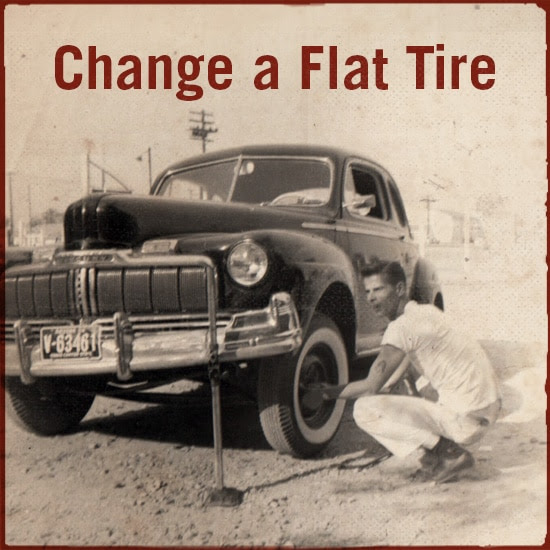
There’s no sound as disheartening to a driver than the “flop flop” of a flat tire. Instead of cursing about it, look at a flat tire as a chance to display your manly sufficiency by changing it yourself. Knowing how to change a flat will save your own butt when you’re out on some lonely stretch of highway, and will come in handy when helping a damsel in distress or a hapless traveler on the side of the road.
25. Break Down a Door
You’re in a burning house and you need to escape, but the door is on fire. Or your loved ones are in a burning house and you’re locked out. You can’t stand there fiddling with the lock — you’ve got to break it down! Or perhaps a loved one is stricken with a medical emergency and is locked inside a room or in their house. What to do? Be a man, dammit! Break down that door! You know you’ve always wanted to.
26. Take the Perfect Photo
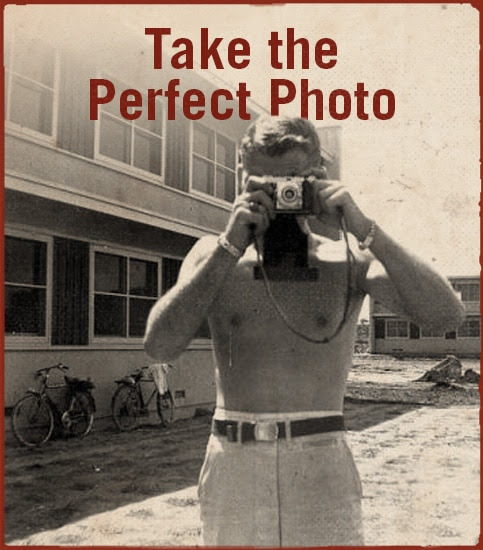
The advent of the smartphone means that most everyone is carrying a high-quality HD camera in their pocket at all times. Unfortunately, this fact alone doesn’t mean you’re taking good pictures with it. Don’t let life’s memorable moments be hampered by a poor photo. Play around with your camera, get to know the various settings, and understand some basics about what makes a great photo.
27. Sharpen a Knife
From pocket knives to kitchen knives to survival knives, blades are one of man’s most important tools. But a dull blade renders your knives useless and dangerous. Know how to sharpen a blade, do it regularly, and you’ll always be ready to slice off a piece of apple, or even slay a killer raccoon.
28. Change a Diaper
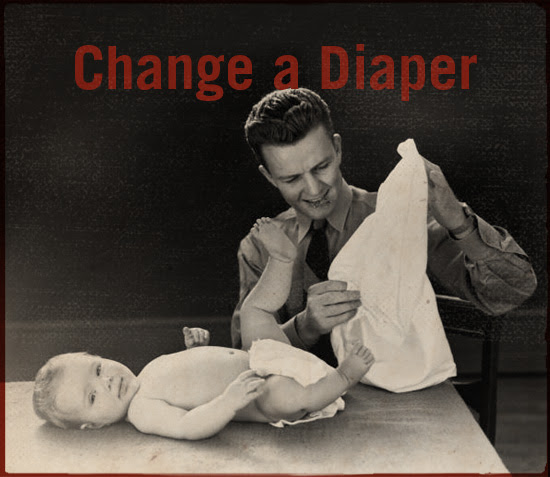
Even if you don’t have plans of being a dad, you’ll end up changing a poop-filled diaper at some point in your life, perhaps for a nephew or godson. Many men are intimidated by the task, but there’s really not much to it, and there are a few tricks that can make it a quick and tidy affair.
29. Give a Speech
We all are faced with speaking opportunities throughout our lives. Whether it’s running for student council president, making a presentation at work, having your voice heard at a city council meeting, or offering a eulogy, a knack for public speaking makes you a more persuasive and powerful man.
30. Navigate With Map and Compass

Sure, we’ve got phones with Google Maps that can give us turn-by-turn directions. But what happens when you don’t have the phone because you’re in the middle of the wilderness and you can’t get a signal? How are you going to get back to your fancy ski lodge now? With a map and compass of course. Out of all the skills I’ve learned over the years, this has been one of the most empowering. It just feels awesome knowing that by simply getting my bearings with a compass and looking at a topographic map I can traverse miles and get to where I need to be.
31. Unclog a Toilet
Some clogs will take care of themselves with a few flushes, but sometimes you drop a monster so big that it takes a bit of work and know-how to get the toilet unclogged. For added skill points, know how to unclog a toilet without a plunger. That’ll save you when you clog the toilet at your girlfriend’s parents’ house and you don’t want to shamefully ask for a plunger.
32. Buy a Suit
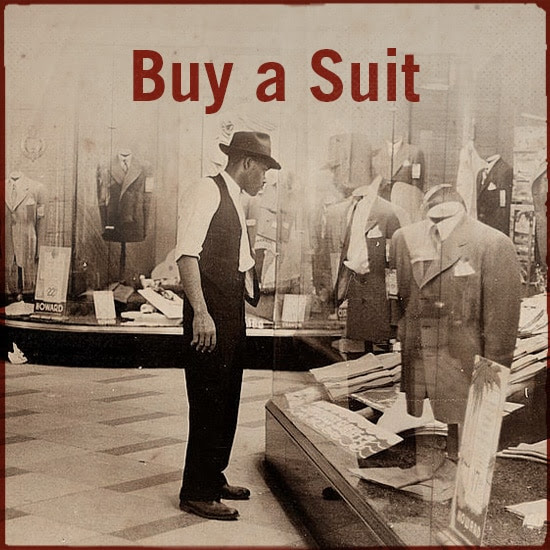
You’ll likely buy two or three suits in your lifetime. If you buy the right one, it will be years, maybe even a decade, before you’ll have to buy another, so know what to look for in a quality suit — how it should fit, how it should be constructed, the details you should care about, and the alterations that can make it nigh near perfect. Not only will knowing how to buy a suit help you, you’ll also be able to help friends and family navigate the haberdashery so they don’t waste money on a crappy-looking outfit.
33. Swim the Front Stroke
Swimming is not only a fun recreational activity, but a survival skill as well. Knowing how to swim the front stroke could not only win you a gold medal (even if it’s just in your backyard olympics), but could very well save your life someday too. It’s the fastest of the primary swimming strokes, and is among the first that any swimmer learns in the pool. If you don’t yet know it, take it upon yourself to find an instructor, and dive in!
34. Shake Hands
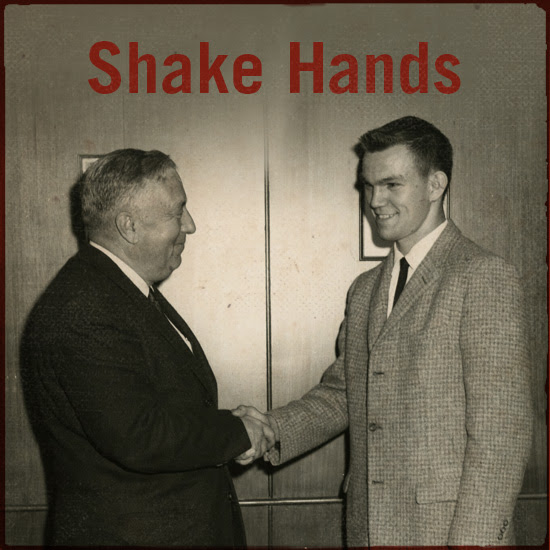
A firm handshake is an important part of a good first impression. A full-grip handshake, given with just the right pressure, and accompanied with your looking in the person’s eyes, conveys warmth and confidence. Conversely, a limp, dead-fish shake or a crushing death grip will get your meeting off on the decidedly wrong foot. Or hand, I guess.
35. Treat Frostbite
It only takes 30 minutes to get frostbite when it’s 0 degrees outside with a 15mph wind. Decrease the temp or up the wind speed, and that number quickly goes to 10 and even 5 minutes. If you experience loss of color or feeling at your extremities (frostbite hits your body at its furthest points from your core), you’re possibly experiencing an onset of frostbite. The first step is to slowly rewarm the affected areas with warm, not hot, water. See here for more tips on treating frostbite.
36. Iron Your Clothes

You’ve got a pair of trousers and a custom shirt, but the whole get-up looks terrible because you couldn’t take the time or didn’t have the know-how to iron your clothes. Many men don’t know how to iron their pants or their shirt because dear old mom did it for them and once they got married, the Mrs. took over the chore. But every man is going to have a period in his life when he’s on his own and he’ll have to do his own ironing. It’s not that hard and takes just five minutes, but it can make all the difference between an outfit looking put-together or sloppy.
37. Practice Situational Awareness
Every day there’s a chance we’ll encounter a threat that can put our safety in danger — an active shooter, a deranged co-worker, or even an inattentive driver. Often times we don’t notice the threat until it’s too late because we’re so engrossed in our own headspace. In the tactical world, it’s often said that the best way to win a fight is to avoid a fight in the first place. To do that, you need to develop your situational awareness. Situational awareness isn’t just knowing what’s going on around you, it also means having a plan for what to do when you notice something go awry.
38. Do a Proper Pull-Up

The pull-up is one of the best upper-body exercises out there, but most people don’t even know how to do one properly. Grab the bar with an overhand grip and start from a dead hang. Pull yourself up until your chin clears the bar. Lower yourself down in a controlled manner and repeat. None of that kipping garbage.
39. Build a Shelter
In any kind of survival scenario, proper shelter will provide much-needed protection from the elements. With some basic materials (wood, reflective blankets, fire), and just a little bit of know-how, you can ensure that you’ll not only survive a night (or more), but even sleep warmly.
40. Grow Your Own Food

Growing your own food is not only a pleasurable, recreational activity, but goes towards building your self-reliance and antifragility as well. Today’s foodstuffs are loaded with unpronounceable chemicals and additives, and whole, natural foods remain expensive. Why not grow your own fruits and vegetables for a fraction of the cost, and twice the flavor? Need even more reasons to start a garden? Here are seven.
41. Cook Eggs
Eggs are a breakfast staple if for no other reason than their sheer versatility. They can be enjoyed on sandwiches, in scrambles, as omelets, or eaten right out of the shell (raw or cooked!). If you can master a few ways to cook eggs, you’ll be a breakfast aficionado who will wow your significant other, or your kids, depending on your station in life. Your primary varieties — scrambled, fried, poached, and hard-boiled — are all easily learned in just a few minutes.
42. Make Small Talk
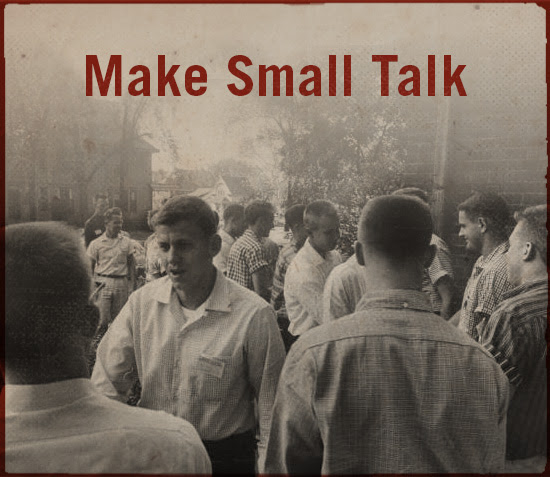
When you spot an acquaintance in a store, do you hope they don’t see you? Does the idea of walking into a party where you only know one person fill you with dread? Do you keep trying to summon up the courage to talk to the cute girl who makes your lattes at the local coffee shop, but whenever you get up to the counter, all you can muster is your order? All of us can relate in some way or another to the conundrum of small talk. It’s sometimes uncomfortable, but can be truly life-changing; you never know if the person you’re standing across from could end up being a good friend, a coworker, or even a wife.
43. Identify Poisonous & Edible Plants
A stroll in the woods is nearly always an enjoyable endeavor; what’s not so enjoyable is discovering a red, itchy rash the next day. Each year, millions of Americans come in contact with poison ivy, poison oak, or poison sumac. These may be the most common irritants, but are far from the only ones. Besides being able to identify plants that can harm you, it’s also beneficial to know the plants that could save your life in a dire situation. Knowing your foliage — both good and bad — is truly a skill every man should have!
44. Do a Front Dive
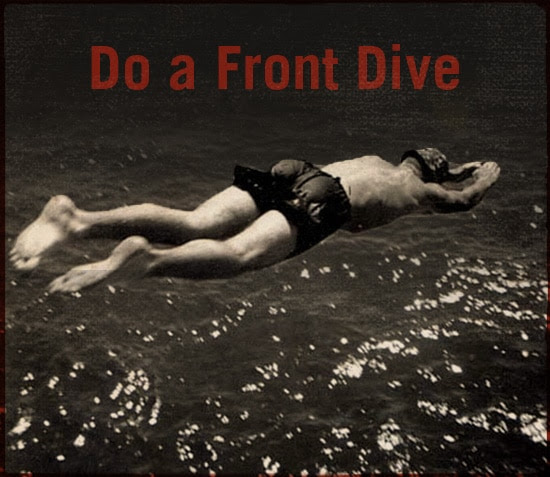
Much like swimming, knowing how to properly dive is not only just a fun skill to have, but could help save your life. In a scenario where you need to skedaddle into the water quickly, such as a sinking boat, the dive is the way to go. It propels you with a jump start of momentum rather than having to get going from the standstill of treading water.
45. Shuffle Cards
It’s always surprising when you’re playing a card game, rotating the shuffling of course, and one of the players has to sheepishly pass the deck because they don’t know this simple, manly skill. If you’re playing cards — be it poker, euchre, gin rummy — you should be able to do your part and shuffle the deck, and do it with some flair too!
46. Hunt
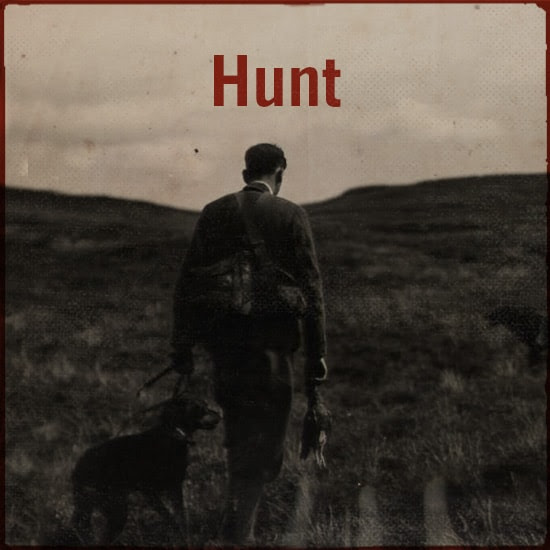
In the book, The Hunting Hypothesis, author Robert Ardrey highlights the research and theories that suggest that what made humans human was the ability to hunt. Since our hunter-gatherer times, hunting has always fallen on men. Ardrey suggests that hunting is how men have displayed nurturing and caring behavior since time immemorial. Besides allowing you to connect with our primal history, knowing how to hunt will allow you to provide for yourself and your family even if you don’t have access to a grocery store. In fact, you could provide a full year of meat for your family during a single hunting season. Kiss your meat expenses goodbye.
47. Properly Pour Beer
Does it really matter how you pour your beer? Isn’t beer, beer, no matter how it’s poured? Well, that may be the case if you’re drinking low-quality beer (I won’t name names), but when drinking a fine brew, it can mean a world of difference. When properly poured, the beer produces aromas and flavors that can only be present at the right conditions, and with the agitation of a proper pour.
48. Perform the Fireman’s Carry
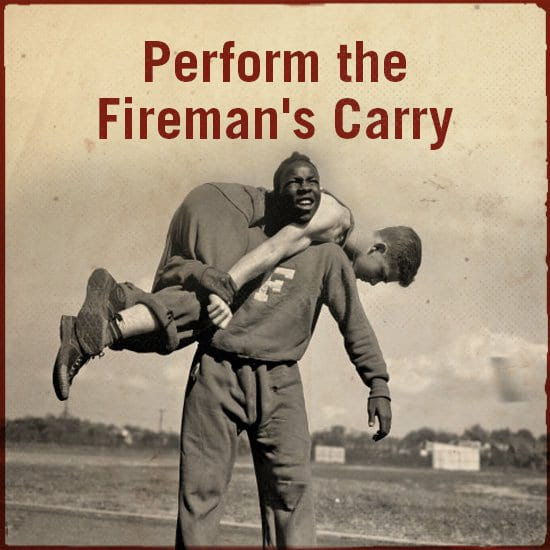
Even if you have the physical strength to save someone’s life by carrying them to safety, do you know the right way to do it? Every man should know how to perform what is called the “fireman’s carry.” It’s an effective way to distribute someone’s weight, allowing you to haul them over long distances with minimal strain. Next time you have to carry an injured victim from a burning building, down a hiking trail, or off the battlefield, employ the fireman’s carry.
49. Open a Bottle Without an Opener
You’ve arrived at the campsite with your friends and some cold beer in the cooler, only to realize you left the bottle opener at home. Lucky for you, that’s no problem — you’re a master of improvisation. We put together 9 MacGyver-esque tricks to open a bottlewhenever you find yourself without an opener. You’ll never be left high and dry again.
50. Cast a Fishing Line
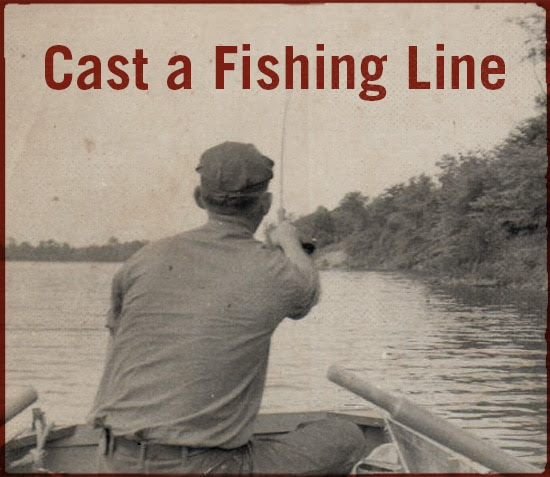
Fishing has been a skill that fathers have passed down to sons since time immemorial. It’s not only a fun and relaxing way to spend a morning or afternoon, but hearkens back to our caveman and caveson days, when fishing was more than just a pastime, but a survival skill. And one of the first steps to learning fishing? Knowing how to cast a line.
51. Speak a Foreign Language
Traveling the world can be quite an adventure, but you can never truly immerse yourself in the places you visit unless you speak the people’s native tongue. Speaking a second (or third) language allows you to connect with locals and experience more of what lies below the surface available only to the passing tourist. Speaking another language may also help you in your business, sharpen your brain, and even aid you in a tactical situation; James Bond was fluent in 4 different languages, and handy in 4 others, after all.
52. Drive in Snow

Even if you grew up doing it, driving in the snow is a bit of a harrowing task. The sun is glaring off the pure-white landscape, black ice threatens at every curve and underpass, and you aren’t quite sure you have the skills to handle a wipe out. When driving in the winter, just remember that slow and steady wins the race (although you really shouldn’t be racing on a snowy road!).
53. Perform the Heimlich Maneuver
Even though you’ve probably heard of the Heimlich maneuver countless times, and seen it dramatized just as many, a lot of folks really don’t know exactly what to do beyond putting their arms around the person and squeezing somehow. Because the abdominal thrusts necessitated by the Heimlich maneuver can cause injury, it should be employed only as a last resort, after other techniques, like encouraging the vicim to cough and slapping them on the back, have been tried. But should you need to reach for this technique, you ought to be able to perform it effectively.
54. Ask a Woman on a Date

Manliness is too often ranked by how many random women a dude can bed. But one of the things that separates man from the beasts is the ability and desire to focus his romantic energies on one woman at a time. Being a lover and romancer is something that makes us human, rather than just another mammal on the Discovery Channel. And there is no better tool in the romantic man’s arsenal than the date. The date’s structure allows a man to show off his ability to woo a lady. Unfortunately, few men have been taking on the challenge of being artful pursuers these days, as our dating abilities have become infected with the plague of hanging out. Don’t be that man. Gird up your loins, and ask a woman out!
55. Always Know North
A man always knows his direction, be it philosophically in life or physically on the road. He can find North without a digital aid. A compass is the easiest and surest way to do this, of course, but there are other methods as well, including using an analog watch, sticks and shadows, the constellations in the night sky, and the moss growing on trees and rocks. But each of these methods of finding North involve a good deal of know-how and nuance, so it’s definitely a skill you’ll need to master before you really need it.
56. Fell a Tree

So you know how to split wood, but how do you get those logs in the first place? You could buy them, but that’s lame. No, you need to go out to the woods and fell your own tree. It’s a dangerous task if you don’t know what you’re doing, but boy is it a great feeling to hear a tree fall on the forest floor with an echoing “THUMP!” End your day felling trees with a large plate of pancakes smothered with Vermont maple syrup.
57. Hitch/Back-Up a Trailer
So you’ve decided to borrow a boat for a weekend of fishing or maybe you’re going to rent an Airstream for that dream road trip across America. Awesome. Do you know how to hitch the boat trailer and the Airstream to your vehicle? Once you get it hitched to your car, do you know how to back-up a trailer without destroying the property around you? Knowing how to hitch and back-up a trailer will open a whole world of outdoor recreation opportunities for you, so get out there and start learning.
58. Play Poker
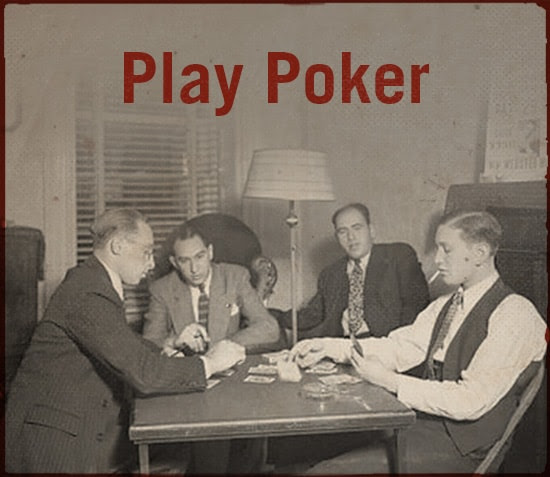
If you’ve never played poker before, going to a casino for a bachelor party or a friend’s house for a casual poker night can be an intimidating affair. The rules of the game itself are hard enough to master (Does my two pair beat your three of a kind? Answer: no it does not.), but you also have to know betting rules and game etiquette. Thankfully, with just a few strategies up your sleeve, it won’t take long to not feel like a newb anymore.
59. Write in Cursive
In our age of texts, tweets, and emails, one thing that can set you apart from the crowd is sending a nice, handwritten letter every now and then. To set yourself apart from the pack even more, write your letter in cursive. It just looks classy and adds a bit of personality to your notes. And don’t just save it for letters. The continuous strokes of cursive make journaling a more meditative experience.
60. Throw a Knockout Punch

Avoid a fight if you can, but if there’s no other option, end it as quickly as possible by throwing a knockout blow. Open your opponent up with high jabs and a few fakes; once he drops his guard, send a powerful straight punch right to his kisser. Lights out.
61. Make Pancakes From Scratch
While eggs are a breakfast staple because of their ease and versatility, pancakes are a fan favorite because of their simply delightful nature. They’re fluffy, warm, and covered in any number of tasty toppings: butter, syrup, peanut butter, fruit, whipped cream. It doesn’t get much better than a tall stack of pancakes to start a lazy weekend with your family. Knowing how make pancakes from scratch will make you a Saturday morning hero.
62. Skipper a Boat
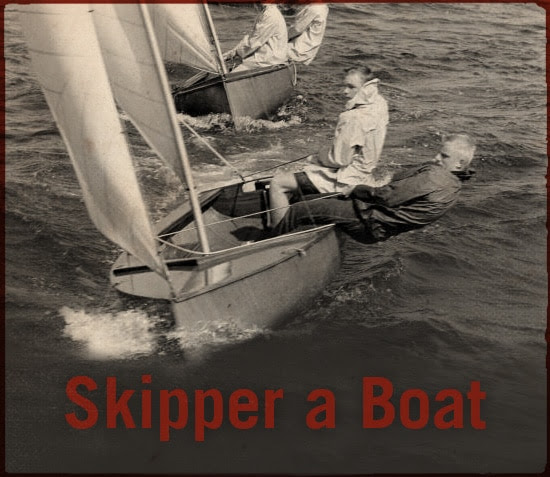
One of man’s great powers is that he is an amphibious creature, able to both traverse the land and navigate the water. Not only should you be able to move through water by your own manpower, you should be able to skim its surface by knowing how to pilot a boat — and not just those that involve a motor and steering wheel. From tying nautical knots, keeping the boat balanced, and trimming the sails, every man should know how to skipper traditional sea craft.
63. Dress For the Occasion
Black-tie. Semi-formal. Business casual. Do you find yourself asking what the heck these terms mean anytime you see them on an event invitation? With just a little bit of study and practice, you’ll come to automatically know the differences — for instance, that business casual means a sports coat and khakis (or even jeans, depending on where you live). You never want to be the guy who wore slacks and a button-up to a semi-formal event.
64. Shoot a Bow and Arrow
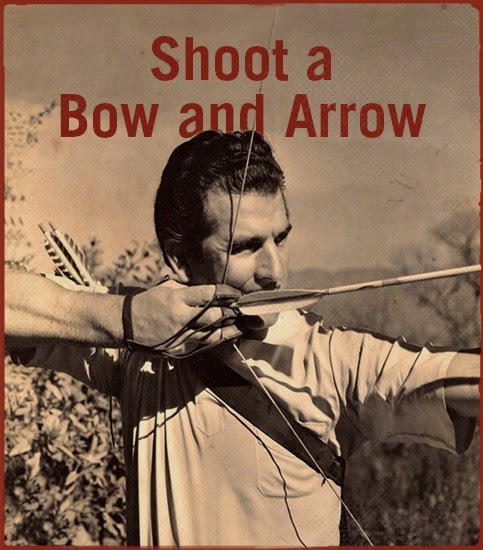
From our survival guru Creek Stewart: “I am a big fan of the bow and arrow for a variety of reasons, and I personally think that anyone who has an interest in primitive survival skills or modern urban survival should seriously consider purchasing a good bow and arrow and become proficient in using it.” The weapon’s portability, versatility, and affordability (you can even craft your own) make it a top choice for hunters and survivalists.
65. Drive Stick Shift
Driving an automatic vehicle is so pedestrian. With a stick shift, you actually feel like you’re part of your car. The synchronicity of man and machine makes driving a manual transmission car not just a chore, but a joy. Plus, owning a manual makes your vehicle pretty much theft-proof — it’s such a lost skill that most would-be thieves wouldn’t know how to drive away with your car even if they managed to break in.
66. Do a Proper Push-Up

When you don’t have access to a gym, there’s always push-ups. They work your chest, shoulders, triceps, and biceps. Even if you do have access to a gym, make push-ups part of your routine throughout the day. An 85-year-old attorney I knew credited his random push-up workouts in his office as the key to his longevity and health.
67. Pick a Lock
Kicking down a door is a great skill to have, but sometimes you need to be a bit more discreet when opening a door that’s locked. Who wants to replace their door every time they lock themselves out of their house? That’s where lock-picking comes in. Besides making you handy, and saving you money on replacement doors or calling a locksmith, this skill also makes you feel a bit like Jason Bourne.
68. Mix Two Classic Cocktails
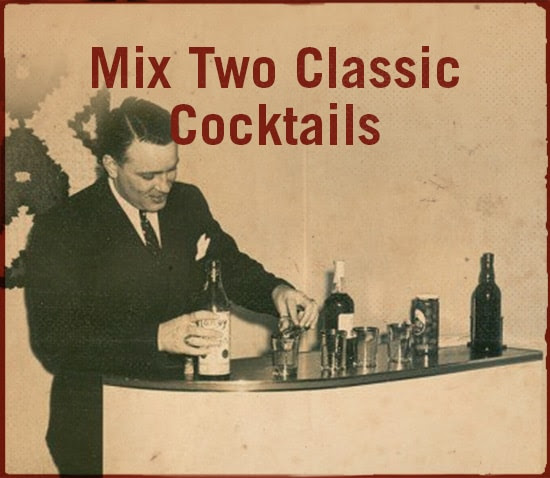
If you’re out on the town with your main squeeze, you can look to spend anywhere from $8 to $20 on a nice cocktail. That’s a lot of scratch for a beverage, especially when you can be making ones at home that taste just as good (if not better!) for a fraction of the cost. And rather than being a one-trick pony, knowing how to make at least two different drinks will make you feel like a real mixologist, and impress your guests too. Learn how to make classics like the martini and the Manhattan; bonus points if you can mix up some interesting drinks for your teetotaling friends too.
69. Field Dress Game
Whether you hunt regularly to stock your freezer with meat or you’re stuck in the wild and need to eat a squirrel to survive, you’ll need to know how to dress your kill so that it’s ready for butchering and eating. If you don’t know anything about dressing game, start with a small animal like a squirrel or a rabbit. It’s less messy, and the same general principles that you use with those animals apply to larger game like deer.
70. Play One Song on the Guitar
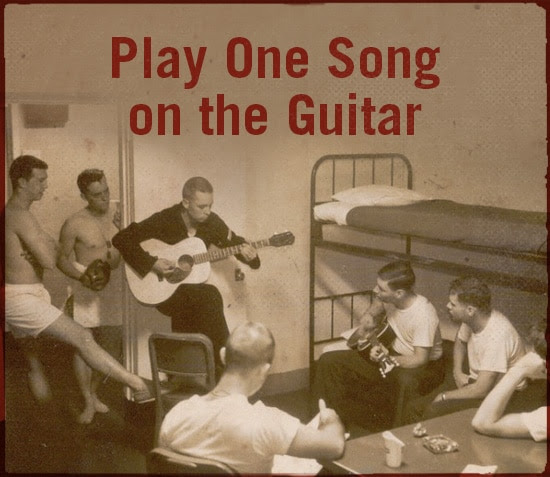
The guitar has a way of showing up at parties and campfires, and it often gets passed around so people who know how to play can strum out some tunes while everyone sings along. Instead of passing it on to the next dude, why not hold on to it and bust out a song of your own? Getting a group of people to sing a song while you provide the accompaniment is an easy way to command a room like a man. Also, chicks dig a dude who can play the guitar.
71. Use a Chainsaw Safely
The aftermath of a heavy thunderstorm or ice storm often leaves broken and fallen branches in your yard. To clean them up, you’ll need to cut them with a chainsaw. Learn how to operate one safely so you don’t accidentally cut off one of your limbs in the process.
72. Do a Squat Properly

You don’t need a bunch of leg machines to get a good lower-body workout; just a barbell with some plates will do. Squats are one of the best exercises you can do for overall strength. Not only do they work your quads and hamstrings, but also your hips, butt, back, and core. There are two variations of the barbell squat: high bar (pictured above) and low bar. Learn them both. They emphasize different muscles and can be used in different strength training routines.
73. Cook a Steak
The beauty of a well-cooked steak is in its simplicity. No fancy seasonings, just a bit of salt and pepper and fire. Know how to cook a steak and you can eat like a king the rest of your life.
74. Entertain Yourself (Without a Smartphone)
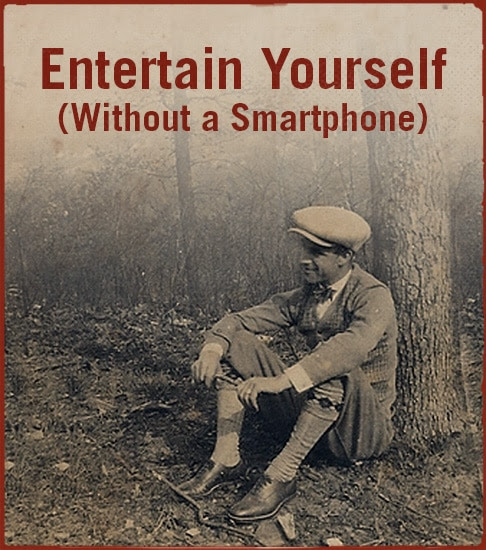
You see it everywhere: people on their smartphones while standing in line, while getting gas, when conversation lulls at dinner…anytime people aren’t stimulated for 10 seconds or longer, out comes the phone. Not only is it rude in many instances, it means you’re tethered to your little electronic device for entertainment. Learn how to pass the time without your phone — play board games, do push-ups during commercial breaks, make a paper airplane, work out a philosophical problem in your head, or turn a boring conversation into a stimulating one by actually listening intently, showing some curiosity, and asking good questions. Heck, learn to enjoy the old pastime of people watching. Being able to entertain yourself is surely one of the 3 characteristics of an educated man.
75. Change Your Car’s Oil
Knowing how to change your own oil can save you time and money. Instead of driving 10 minutes to the Kwik Lube, waiting another 30 minutes before your car can get worked on, waiting another 15 minutes while the oil change actually takes place, and then driving another 10 minutes back home, just get the job done in half an hour by doing it in your garage. Besides saving you time and money, changing your own oil just feels self-sufficient and darn manly.
76. Whistle With Your Fingers
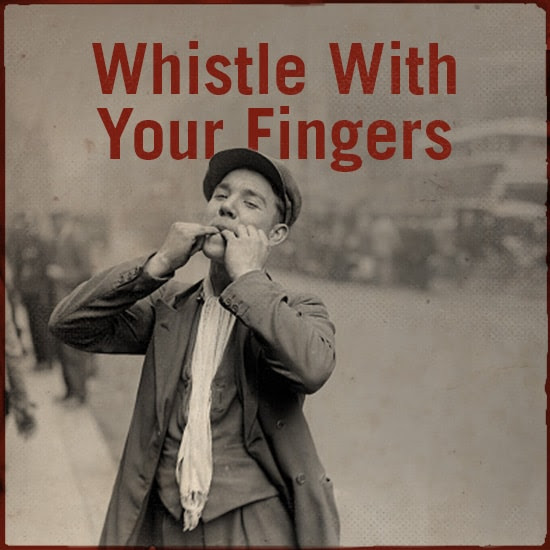
With a loud, commanding whistle you can call your dog, your kids, a taxi, or the peanuts guy at the ballpark. Using your fingers makes it easy to get that ear-piercing whistle sound whenever you want it. This is a small skill, but a weirdly satisfying one to master.
77. Shovel Snow
Snow shoveling is often a back-breaking, tiresome process. You could be moving hundreds of cubic feet of the fluffy (or not-so-fluffy) white stuff. It’s generally not a particularly fun activity, although it is an excellent workout and a fine opportunity to fill your lungs with crisp, clean air. While those in colder environs are practically born knowing this skill, others may need a couple quick pointers to ensure the best and most efficient job possible.
78. Carve a Turkey
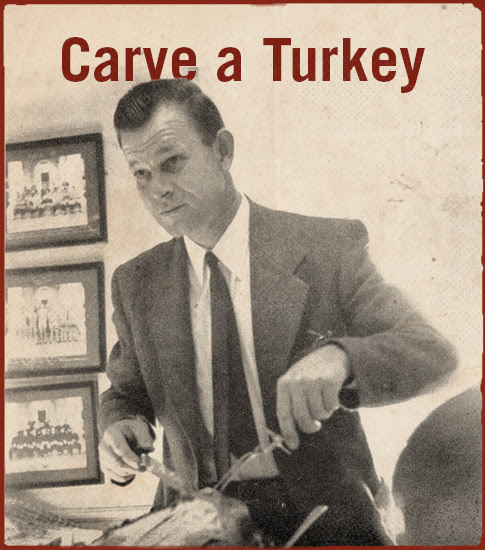
Primitive hunters often dressed and butchered their game in the field, in order to divide up the carcass among the hunting party and make it easier for carrying back home. Maybe the echoes of this task is why carving the Thanksgiving turkey typically falls upon the man in a household in our modern day. When you get called up to carve the bird, you want to be ready with skill and know-how that will allow you to get as much meat as possible from the turkey without mutilating it. Take pride in the artfully sliced platter of juicy turkey you assemble for your guests.
79. Tie a Bowline
The bowline is a loop knot that is incredibly secure. Consequently, it’s often used in rescue situations in which you need to pull someone out of a ditch or ravine. You can also use it to tie off the boat to your dock. Once you master tying the bowline with both hands, earn bonus man points by learning how to tie it with one hand.
80. Ride a Horse

Sure, in this motorized world, knowing how to ride a horse may be the most “archaic” skill on this list. But I’ll be darned if it’s not also one of the most satisfying. Many a great man from history used horseback riding as a way to decompress — Thomas Jefferson, Teddy Roosevelt, Jack London. It simply feels wonderful to mount up and head towards the horizon. Also, if American cinema is correct about the apocalypse, horses will once again be the primary mode of transportation one day. So don’t scoff — know how to saddle up!
81. Give a Good Massage
While the date is the ultimate tool in the gentleman’s romantic arsenal, you need other skills as well to impress your gal (including many on this list!). Among them, knowing how to give a good massage — and just for her sake rather than in hopes of sex — is an important one. She’ll feel loved and cared for, which is the ultimate way to affair-proof your relationship.
82. Get a Car Unstuck

There are a lot of things your car can get stuck in: mud, snow, even a ditch. While every situation is different, there are some principles you can follow that may help you become unstuck without needing to call for a tow. Knowing them could save you thousands of dollars in towing fees, and may be a necessity in rural areas that don’t have cell phone reception.
83. Break a Rack of Pool Balls
So you’ve watched The Hustler — one of the best movies of all-time — and you’re inspired to head down to your local pool hall for some billiards action. You grab a cue, line it up to break the rack, and instead of hitting it perfectly like you did in your daydreams, you shank the cue ball for the ultimate whiff, and the rack is still intact. Breaking the rack is your billiards first impression — it has the potential to intimidate foes and impress buddies. Don’t blow it.
84. Make a Logical Argument

In the age of the internet, it seems that logical arguments have gone the way of the dodo. Debates, whether in online comment sections or on TV, are not much more than name-calling matches in which whoever shouts the loudest wins. Debates and arguments should be civil affairs, though, that avoid logical fallacies and employ sound reasoning. Learning this skill builds your powers of persuasion, puts you a leg up in our modern world, and allows you to stand out as a real gentleman. For it’s not the volume of your voice that signifies a masterful debater and skilled rhetorician, but the content of your words.
85. Cook Bacon
Nothing tastes better on a cold winter morning than some pork bacon (turkey bacon is not bacon) fried in a cast iron skillet. You don’t want bacon too soft or too crispy. Getting that just-right texture takes patience and skill (and maybe even ditching that skillet for the oven). Add man points for frying bacon shirtless and braving those hot kisses of grease.
86. Write a Letter
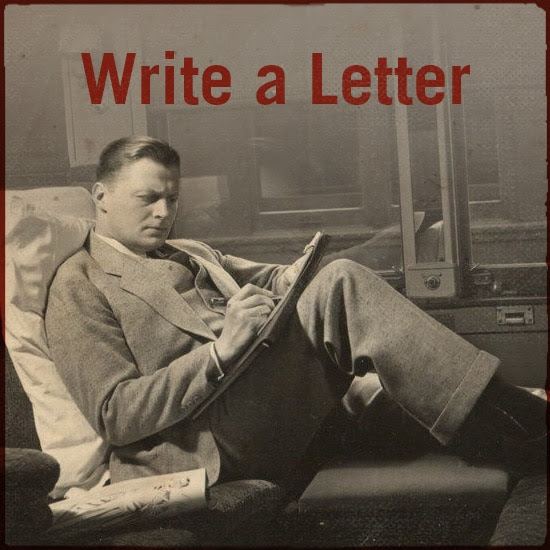
At AoM we’re great champions of the lost art of letter writing. Emails, texting, and the wide variety of other digital mediums available to us in the modern age are convenient and efficient, but they can’t hold a candle to the warm, tangible, classy nature of handwritten correspondence. Letters are the next best thing to showing up personally at someone’s door. And their permanence is unrivaled; long after we’ve forgotten the password to our hotmail account, our shoebox of letters will remain. Write to a pen pal; write regular thank you notes; write letters of “emotional insurance” to your children; and be sure to write all 7 of these letters before you turn 70.
87. Shoot a Gun
A gun can provide food, protection, and even an afternoon of fun. It’s an extremely useful tool, but a dangerous one. You need to know how to safely operate different types of firearms (pistols, shotguns, rifles) without unintentionally injuring those around you or yourself. Even if you don’t have plans on becoming a “Gun Guy,” at least have a basic understanding of how firearms work in case you ever come across one in the wild, or need to use one to save your life.
88. Make a Toast
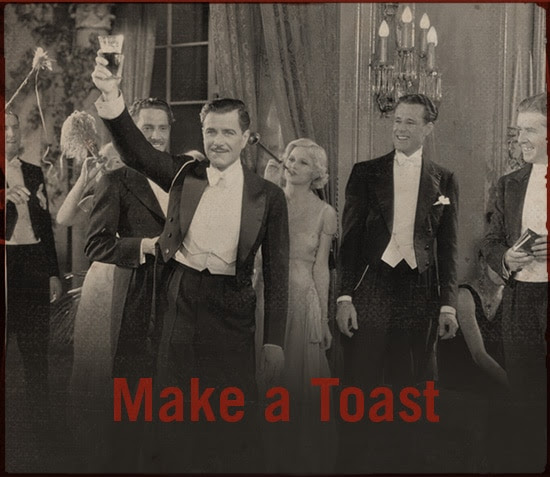
You don’t want to be the Best Man that’s remembered for giving an utterly cringe-worthy toast at your buddy’s wedding. And besides weddings, you’ll likely have several opportunities to provide toasts throughout your life. With a bit of forethought and practice in front of the mirror, your toasts can sound natural, inspiring, and memorable (in a good way).
89. Jump Start a Car
It happens to every one. Somehow the dome light in your car got left on while you were in the office and now your car’s battery is dead. Instead of calling AAA to get the car going for you, jump start it yourself. It will save you time and money. Plus it’s a skill that will make you incredibly useful to others. You’d be surprised by how many people don’t know how to jump start a car.
90. Know How to Dance

Nothing impresses a woman more than a man who knows how to dance. And by dance I mean ballroom dancing where you lead a gal across the dance floor. None of that “nae nae” nonsense. Basic ballroom dancing isn’t that hard. Start off with the waltz and foxtrot and you’ll be good for most weddings and cruises.
91. Brew the Perfect Cup of Coffee
Sure, you can plop some Folgers into a filter and hit the “Brew” button on your coffee machine. But that’s like going to Walmart to buy a suit. You just aren’t getting the best product. Grinding your beans, boiling your water, and brewing them in a French press truly creates the perfect cup of coffee, and also adds an element of craftsmanship to your morning routine. You can try roasting your own beans, as well as some other tactics to level up your morning coffee game.
92. Tie a Tourniquet
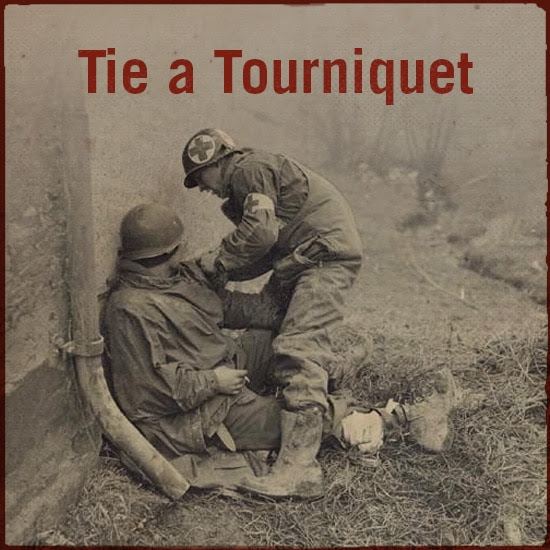
For a long time, tying tourniquets was a frowned-upon method for controlling major bleeding — something to be employed as an absolute last resort. That’s because during the wars of the 20th century, when it often took a long time for a wounded solider to get medical attention, the tourniquet would end up cutting off the blood supply for too long, necessitating amputations. But the wars in Iraq and Afghanistan showed that tourniquets, coupled with speedy medical attention, could be absolute life savers, and thus their use has been revived in combat and civilian medicine alike. You still need to know when and how to properly tie a tourniquet though, so study up and then do ample hands-on practice.
93. Know Two Cool Uncle Tricks
An essential part of being an awesome uncle is having a repertoire of tricks and jokes that will amaze your nieces and nephews, and crack them up. From juggling and pulling coins from ears, to levitating and “bouncing” dinner rolls on the floor, every uncle should have at least two giggle-inducing tricks up his sleeve.
94. Fillet a Fish
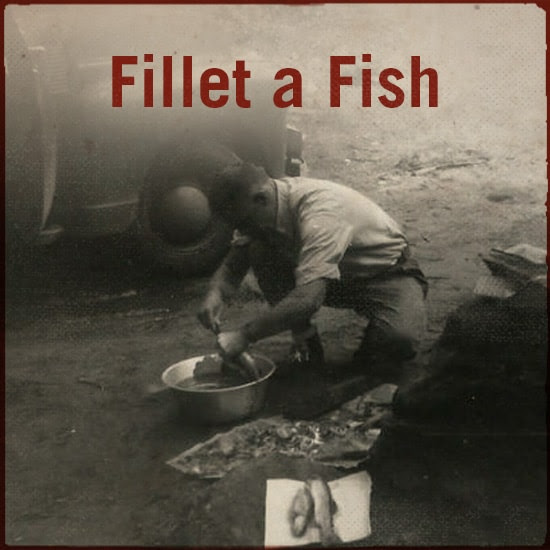
What makes fishing even more satisfying is being able to fillet and cook your catch for a real water-to-table experience. Throw it in a skillet with some garlic, lemon, and butter, fry it over the campfire you’ve built, and enjoy a wild dinner under the stars.
95. Calm a Crying Baby
Whether your baby has colic or just intermittent fussiness, their cries can really do a number on your equilibrium. Since babies can’t do anything for themselves, their cries are designed by nature to get your attention, burrowing into your brain and refusing to let go until you alleviate their distress. Their wails elicit a real physiological response — you start to sweat, your heart rate goes up, and your body releases cortisol (the stress hormone). So it’s no surprise that knowing how to calm a crying baby is one of the most important new-dad tools you can have in your arsenal!
96. Ride a Motorcycle
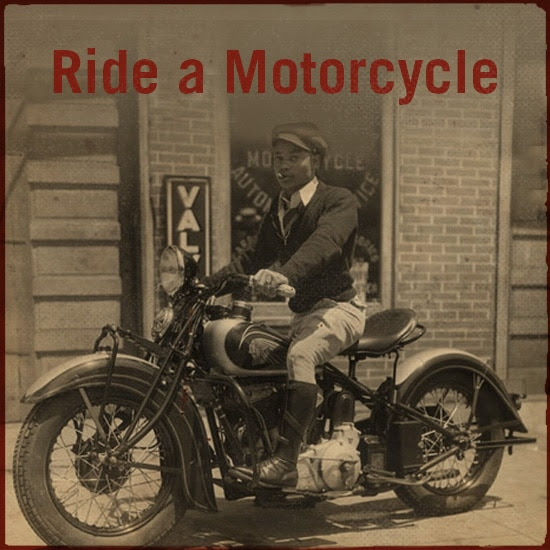
Motorcycles are one of the pinnacles of manliness. They’re up there with Islay single malt, grass-fed sirloin, and Creed’s Green Irish Tweed aftershave. Why? Because unlike automobiles, they offer a visceral experience: one that requires skill, mental engagement, and risk management. On a motorcycle, you can’t sip coffee, fiddle with your phone, or daydream the minutes away. Your senses are on red alert, and your life depends on two tiny patches of rubber connecting you to the road. Riding a motorcycle is an experience every man should have in his life.
97. Hammer a Nail Correctly
To the unskilled, hammering just means pounding the hell out of something until you get the job done. Sure, you could do that, but you’ll end up with crummy results and a tired arm to boot. A wise handyman knows how to use a hammer safely, effectively, and efficiently.
98. Cook a Signature Dish
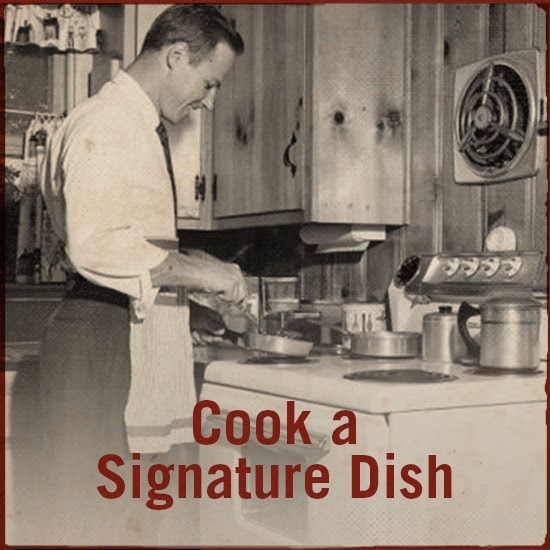
Cooking cultivates a variety of manly qualities, from self-reliance to chivalry. So while you need not become a 5-star chef, at a certain point every man needs to move on from the Easy Mac, ramen, and frozen pizza he subsisted on in college. Knowing your way around the kitchen can be intimidating at first, but even with just a single pot you can make some tasty meals that will impress friends, family, and ladies alike. Once you’ve mastered some basics, you can work on creating a signature dish that you perfect and whip up on special occasions.
99. Make Fire Without Matches
It’s easy to start a fire when you have a pack of matches at your disposal. But could you forge a flame if you didn’t have that crutch? Or would you starve and freeze? There are many ways to make fire sans matches, from using a battery or magnifying glass to going totally primal and using only a board and a stick. Learn as many methods as you can, so that if you ever find yourself alone on a desert island, you can declare to your volleyball friend: “I have made fire!”
100. Tell a Story

Every man needs to be able to tell a great story. It might be for a presentation you give at work. Or for a paper you need to write. Maybe you’re just hanging out with your buddies swapping stories. Or you’re tucking your kids into bed, and a nighttime tale is demanded. No matter the scenario, it takes a certain amount of skill to tell a story in a way that captivates an audience.
The most important part of storytelling though, is simply having the experiences that make for good tales. What stories of your life will you have to tell your grandkids? Start making those memories now by learning as many of these skills as you can. The more know-how you gain, the more places you can go, things you can do, and people you can converse with; in short, the more skills you master, the more adventures you can have!









Now I own one of these fine scatterguns. My only advice is that you get a fitted recoil pad put on by a gunsmith that knows what they are doing.
Especially if you are recoil sensitive like me. Even though as a gas operated shotgun its recoil is not as bad as a pump or double barrel shotgun is. Just saying that’s all! Grumpy

This is an example of some gunsmith who really knew what they were doing!









Now here is the Bad News first then the Great News !
The Bad
They are very Expensive. They are also hard to find it in order to buy one.
Folks who gave them are very condensation to non Sig Owners.
(Not True actually, I just checking to see if you are paying attention that’s all)
They are most Boringly pistol ever made!
The State of California in its “Infinite Wisdom”. Will not allow me to use or own any of the High Capacity magazines available in the FREE STATES of the USA.

It will go thru a box of 9mm in no time flat!
Now for the The Good News!
It shoots like a dream & makes for a Happy Gun Owner!
It is super accurate! (See the video below !)
It will function with any kind of 9mm ammo around it.
It is made out of steel. Making it a great thing for Pistol Whipping if need be.
It is super easy to tear down & clean!

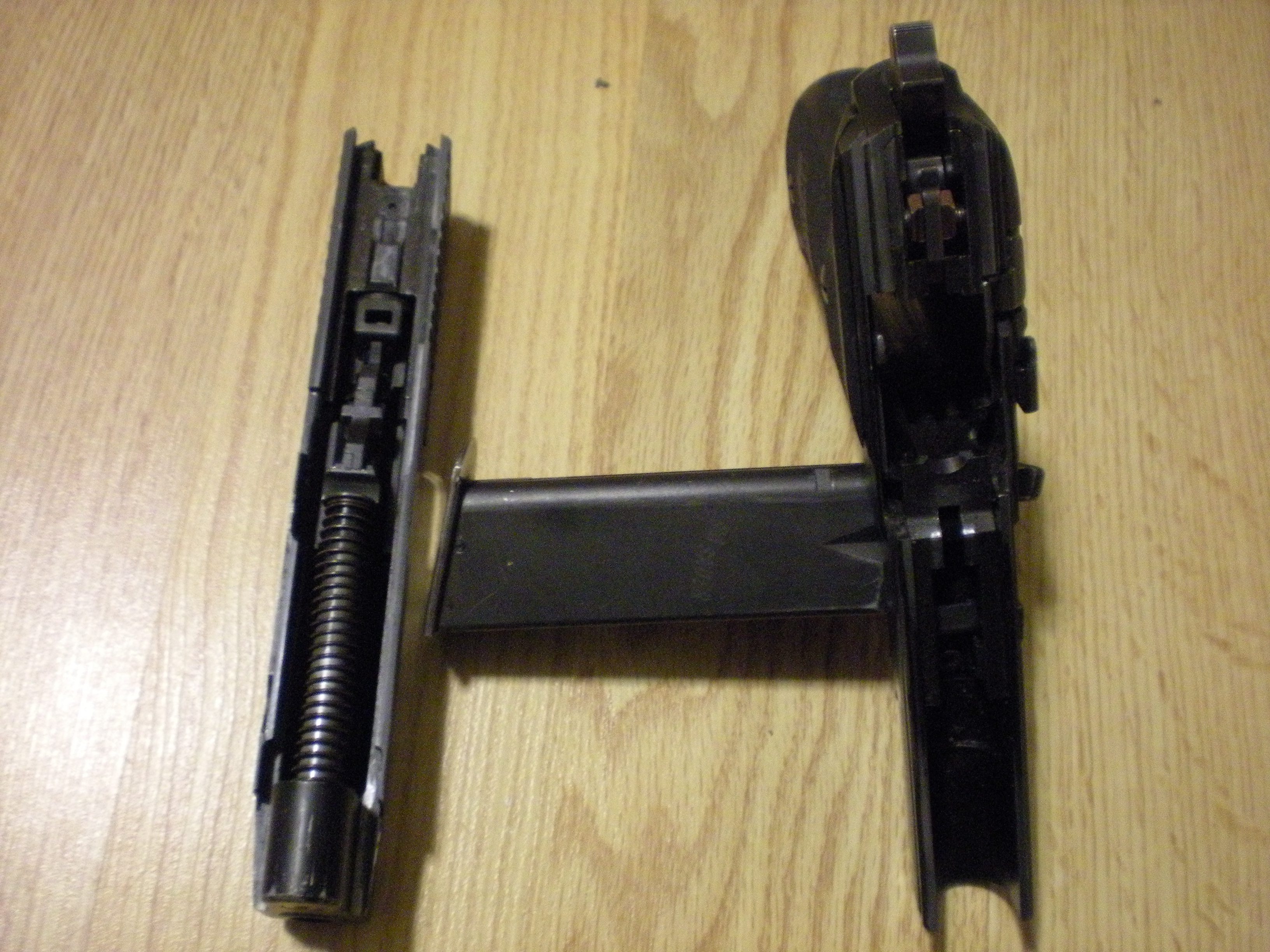
Here is some more & Better Technical information!
Thanks
Grumpy
SIG Sauer P226
|
|
It has been suggested that SIG Sauer P227 be merged into this article. (Discuss) Proposed since June 2016. |
| This article needs additional citations for verification. (December 2016) (Learn how and when to remove this template message) |
| SIG Sauer P226 | |
|---|---|
 |
|
| Type | Semi-automatic pistol |
| Place of origin | Germany |
| Service history | |
| Used by | See Users |
| Production history | |
| Designed | 1980-1983 |
| Manufacturer | SIG Sauer |
| Produced | 1983-present |
| Variants | See Variants |
| Specifications | |
| Weight | 964 g (34.0 oz) (w/ magazine)[1] |
| Length | 196 mm (7.7 in)[2] |
| Barrel length | 112 mm (4.4 in)[2] |
| Width | 38.1 mm (1.50 in)[1] |
| Height | 140 mm (5.5 in)[1] |
|
|
|
| Cartridge | 9×19mm Parabellum, .40 S&W, .357 SIG, .22 Long Rifle (Classic 22 model only) |
| Action | Mechanically locked, recoil operated(DA/SA or DAO) |
| Feed system | 10-, 12-, 13-, or 15-round magazine(.40 S&W, .357 SIG); 10-, 15-, 17-, 18-, or 20-round magazine (9×19mm Parabellum); 10-round polymer magazine (Classic 22 only) |
| Sights | Iron sights |
The SIG Sauer P226 is a full-sized, service-type pistol made by SIG Sauer. It is chambered for the 9×19mm Parabellum, .40 S&W, .357 SIG, and .22 Long Rifle. It is essentially the same basic design of the SIG Sauer P220, but developed to use higher capacity, double stack magazines in place of the single stack magazines of the P220. The P226 itself has spawned further sub-variants; the P228 and P229 are both compact versions of the double stack P226 design. The SIG Sauer P226 and its variants are in service with numerous law enforcement and military organizations worldwide.[3]
Contents
[hide]
- 1History
- 2Design details
- 3Manufacture
- 4Variants
- 4.1P226 Rail
- 4.2P226 Tactical
- 4.3P226 Tactical Operations (TacOps)
- 4.4P226 Navy
- 4.5P226 MK25
- 4.6P226 Blackwater
- 4.7P226 SCT
- 4.8P226 Equinox
- 4.9P226 ST
- 4.10P226 S Sport Stock
- 4.11P226R HSP
- 4.12P226 X-Five
- 4.13P226 X-Six
- 4.14X-Series
- 4.15P226 Elite
- 4.16P226 Combat
- 4.17P226 E2
- 4.18P226/P229 Classic 22
- 4.19P226 LDC
- 4.20P226 Legion
- 4.21P228 (M11)
- 4.22P229
- 4.23DAK Version
- 4.24P224
- 5Users
- 6See also
- 7Notes and references
- 8External links
History[edit]
Schweizerische Industrie Gesellschaft (SIG) is a Swiss company, now known as Swiss Arms. In 1975, SIG entered into an agreement with German gun manufacturer J.P. Sauer & Sohn to develop and market a new handgun which became the P220. The P220 was the first SIG Sauer handgun sold in the USA. It was marketed initially by Browning as the Browning BDA. The SIG Sauer P220 is a refinement of the Petter-Browning design used in the SIG P210. The locked breech design is very different and was pioneered by SIG Sauer. See also The first SIG Sauer Handgun.
The P226 was designed for entry into the XM9 Service Pistol Trials (see also Joint Service Small Arms Program) that were held by the US Army in 1984 on behalf of the US armed forces to find a replacement for the M1911A1 and 24 other makes of handgun in US military service. Only the Beretta 92SBF and the SIG P226 satisfactorily completed the trials.[4]According to a GAO report, Beretta was awarded the M9 contract for the 92F due to a lower total package price. The P226 cost less per pistol than the 92F, but SIG’s package price with magazines and spare parts was higher than Beretta’s. The Navy SEALs, however, later chose to adopt the P226 as the P226 MK25 with special corrosion protection.[5]
For the U.S. military XM9 trials, the P226 was imported by Saco Defense. Interarms took over importing when the pistol was introduced for civilian sales. SIG Sauer eventually founded SIGARMS, Inc. (Now SIG Sauer in the United States to handle importation of their products. In 2000, SIG Holding AG sold J.P. Sauer & Sohn GmbH to two German businessmen.[6] The brand name SIG Sauer remained at J.P. Sauer & Sohn GmbH.
Design details[edit]

Detail of the controls and parts: 1. Ejection port/locking lug, 2. Rear sights, 3. Hammer, 4. Takedown lever, 5. Decocker, 6. Slide stop, 7. Trigger, 8. Magazine release.
The P226, like the other members of the SIG Classic family, operates by the locked breech short-recoil method pioneered by John Browning. On firing, the slide and barrel are locked together for a few millimetres of rearward movement, after which the barrel is cammed down at the rear. By this time the bullet has left the barrel and the pressure has dropped to safe levels, whereupon the slide completes the rearward stroke, ejecting the spent cartridge. The recoil spring then propels the slide forward, stripping a round from the magazine and in the last few millimetres of forward movement the barrel is cammed upwards, locking the slide and barrel together again.
Instead of the locking lugs and recesses milled into the barrel and slide of other Browning-type firearms (such as the Colt M1911A1, Browning Hi-Power and CZ 75), the P226 locks the barrel and slide together using an enlarged breech section of the barrel locking into the ejection port. This modified system, which was devised by SIG based on Charles Petter‘s Modèle 1935A pistol and their own SIG P210, has no functional disadvantages compared to the original system, and has since been copied by numerous firearm manufacturers.
The slide of the pre-1996 P226 was a heavy gauge, mill finished sheet metal stamping with a welded on nose section incorporating an internal barrel bushing. The breech block portion was a machined insert attached to the slide by means of brazing and a roll pin visible from either side. Since 1996, production has shifted to CNC machining and the slide is now milled from a single piece of stainless steel. Therefore, the current standard P226 has a Nitron coated, stainless steel slide. This resulted in a stronger slide, which was necessary to chamber the more powerful .40 S&W and .357 SIG cartridges.[citation needed] The frame of most models is made from hard anodized aluminumalloy.
The standard SIG P226 incorporates a decocking lever on the left side of the frame above the magazine release button, which first appeared on the Sauer 38Hprior to World War II, which allows the hammer to be dropped safely. In chambering or firing a round, the actuation of the slide automatically cocks the hammer. By using the decocking lever, the hammer can be de-cocked without actuating the firing pin block, making it impossible to accidentally fire the firearm by using the decocking lever. Furthermore, using the decocking lever makes the firearm “drop safe“, which means the firing pin will be blocked from striking a loaded round unless the trigger is pulled. Pulling the trigger and slowly lowering the hammer does not make the firearm “drop safe”, and can result in an accidental discharge if sufficient force is applied to the hammer.
Properly decocked, the pistol can be holstered safely and can be fired in double action mode by simply pulling the trigger. The SIG P226 has no manual safety. Double action trigger pressure is approximately 44 N (9.9 lbf). Subsequent shots are fired in single action mode with a lighter trigger pressure of approximately 20 N (4.5 lbf). As with other DA/SA pistols such as the HK USP and Beretta 92F, some training is required to minimize the difference in point of aim caused by the different trigger pressure between a first double action shot and subsequent single action shots. The hammer may also be manually cocked at any time by the user to fire in single action mode.
Manufacture[edit]
SIG Sauer firearms are manufactured in Switzerland, in Eckernförde, Germany by J.P. Sauer & Sohn, and in Exeter, New Hampshire, United States by SIG Sauer Inc., formerly SIGARMS Inc.
Copies of the P226 are produced in China by Norinco, under the name of NP226. Other unlicenced copies include the MA-6 in Myanmar and ZOAF in Iran, both are standard-issue pistols of their armed forces.
Variants[edit]
P226 Rail[edit]
The P226 Rail (or P226R) is the same as a P226, but it has a rail on the underside of the frame, just forward of the trigger guard. The P226R’s rail has a more rounded contour than the military standard M1913 Picatinny rail and while most Picatinny-rail accessories will fit, not all will. This has now become the standard P226.[1]
P226 Tactical[edit]
A P226R with an extended 127 mm (5.0 in) barrel and external threads to accept a suppressor (the standard P226 barrel length is 112mm (4.4 in)). It was also equipped with SIGLITE Night Sights, 1 extended 20rd. magazine and 2 standard 15rd. magazines.
P226 Tactical Operations (TacOps)[edit]
Essentially a P226 Elite with extended Magwell grips and a Nitron coated stainless steel slide. The Elite beavertail frame is used (with standard accessory rail), and the slide features front cocking serrations. Like the Elite, SRT is standard. Magazine capacity is 20 rounds in 9mm, and 15 rounds in .40S&W and .357 SIG. The firearm comes with SigLite rear combat night sights and a TruGlo tritium fiber-optic front sight. The firearm ships with 4 magazines. An extended, threaded barrel is optional.
[edit]
U.S. Navy SEAL teams started using the SIG P226 in the 1980s, after German Kampfschwimmer tested them successfully.
The first Naval Special Warfare inspired P226 pistols to be offered to the public were the NSW Commemoratives, issued in early 2004. The SIG P226-9-NAVY is a version of the SIG P226 produced that features a stainless steel slide engraved with an anchor to designate them as Naval Special Warfare pistols. SIGARMS raised $100,000 for the Special Operations Warrior Foundation through the sale of these NSW serialized pistols. The pistol with the serial number NSW0001 was sold during a live auction on the US-wide syndicated Laura Ingraham radio show for an additional $25,000. Later produced commercial versions added a universal rail for accessory attachments while retaining the anchor of previous models, but do not have the SIGLITE Night Sights.[7]

A P226 Mk25 model featuring the UID barcode, Silver Anchor and a Surefire X300 Ultra weapon light mounted on the Picatinny rail.
P226 MK25[edit]
Released in 2011, the MK25 has been advertised by SIG as being identical to firearm carried by the U.S. Navy SEALs. Features that help identify it amongst other P226 variants include the silver anchor and UID identification label on the left side of the pistol, as well as a mil-spec picatinny rail. Although cosmetically similar to the Navy model, the MK25 features an anti-corrosion coating applied to all external and internal surfaces, as well as SIGLITE Night Sights.[8]
P226 Blackwater[edit]
Introduced in 2007, the SIG P226 Blackwater was designed in cooperation with the Blackwater Training Center. It featured SIGLITE front and rear night sights, the Blackwater USA logo on the slide and wood grips, an integral Picatinny rail, black anodized frame, and Nitron-coated stainless steel slide. It was available only in 9×19mm Parabellum, with a double-action/single-action (DA/SA) trigger. The gun was sold with five 15-round 9mm magazines. The P226 Blackwater was discontinued in 2009 with the release of the P226 Blackwater Tactical[9] – a nearly identical pistol also with 20-round 9mm magazines.[10] The Blackwater Tactical has since been discontinued, having been replaced by the Tactical Operations. It is essentially the same firearm, but lacks Blackwater markings.
P226 SCT[edit]
The P226 SCT (Super Capacity Tactical) is an all black, Nitron finished P226 featuring front cocking serrations, accessory rail, a SIGLITE rear night sight, a TRUGLO Tritium Fiber Optic front sight and comes with four newly designed 20-round magazines for the 9mm version or four 15-round magazines for the .40 S&W version.
P226 Equinox[edit]
The P226 Equinox comes chambered in .40 S&W and features a two-tone accented design. The design is achieved by the brush polished flats of the slide and nickel accents of the gun’s controls. The P226 Equinox comes with a TRUGLO Tritium Fiber Optic front sight, rear SIGLITE night sights, SIG accessory rail, and gray laminated wood grips.
P226 ST[edit]
The SIG Sauer P226 ST was a limited production all-stainless version of the SIG P226 pistol. It is heavier than a standard P226 because the frame was made of stainless steel instead of aluminum. Weight with the magazine was a hefty 1,196 g (42.2 oz) vs 964 g (34.0 oz) of the standard aluminum-framed version. The added weight of an all-stainless frame is claimed to provide greater recoil reduction and a quicker return to target between shots making it a common choice among Practical Shooting competitors. The P226 Stainless had a blued barrel and featured an M1913 Picatinny rail. These frames were made in Germany. Prototypes were tested in 2004 and it went into production in very limited numbers. The P226 ST is no longer manufactured.
P226 S Sport Stock[edit]
The P226 Sport Stock was produced in Germany in 2002 and 2004 in limited numbers, all stainless construction with a strengthened frame dust cover, 4.4 inch stainless bull barrel, extended controls, and comes originally with Hogues grips and LPA target sights, these are often referred as the SIG Mastershop predecessors to the X-family.
P226R HSP[edit]
On sale in September 2005, SIG Sauer Homeland Security Pistols (HSP) are the same models SIG builds for the United States Department of Homeland Security. This is a limited production run of 1,000 P226R HSP pistols available engraved with the American flag and Homeland Security X of 1000. Additionally, each pistol comes in .40 S&W caliber and is engraved with serial number barcoding just like those which were shipped to DHS. The HSP also features the new DAK trigger, a stainless steel Nitron slide topped with SIGLITE night sights, and a light weight alloy frame with rail.
There is also a P229R HSP model available with the same features.
P226 X-Five[edit]
The SIG Sauer P226 X-Five is a competition only variant of the P226 with a 127 mm (5.0 in) slide and barrel, beavertail grip, and an adjustable rear target sight. Intended for IPSC Wa1500, bullseye and other centrefire competitive shooting, the X-Five is hand-fitted and assembled in Germany, and its resulting accuracy accordingly rivals the SIG P210. Available in 9mm or .40 S&W, there are five models being offered in the United States:
- The “Competition” model has a single-action-only (SA) trigger, ambidextrous thumb safety, flared magazine well, and high-capacity magazines (19-round 9mm/ 14-round .40 S&W).
- The “Level-1” model adds a special adjustable SA trigger and Nill wood grips.
- The “Lightweight” model is similar to the “Level-1” but with an alloy rather than stainless frame. (US models only chambered for 9mm.)
- The “Allround” model has a double-action/single-action (DA/SA) trigger, a decocking lever and a standard magazine well designed to accommodate P226 magazines.
- The “Tactical” model comes with a black Ilaflon finish, and features a heavy-weight alloy frame with a SIG rail, and fixed contrast or tritium night sights. Available in single action only (SAO) configuration. The X-Five Tactical model is available only in 9mm.[11]
- The “Norway” is a very limited edition model that was created for the Norwegian Special Forces and comes completely made of stainless steel with a PVD coating. There were approximately sixteen of these imported to the U.S. making them extremely scarce.
All SIG P226 X-Five models include a factory test target with a sub-50 mm (2.0 in) 5-shot grouping from 25 m (27 yd).
P226 X-Six[edit]
The SIG P226 X-Six is designed, manufactured, and marketed as a precision pistol under SIG’s sporting firearm line. The X-Six features an extended slide and frame to accommodate a 152 mm (6.0 in) barrel, an ambidextrous manual safety and a trigger adjustable for pull weight, distance and stop. To further enhance the X-Six’s sporting pedigree the pistol features a standard low profile adjustable sights, grip grooves cut into the front of the frame, lightweight magazine extension and NILL sporting grip plates.
- The P226 X-Six is also offered with an aluminum frame. This model, designated the P226 X-Six AL is identical to its steel frame counterpart in every way yet weighs in at only 1,070 g (38 oz).
X-Series[edit]
The X-Series was launched in 2013. It is a redesign and expansion of SIG Sauer competitive models, consisting of the brand new X-Short (Barrel lengths comparable to the standard P226) and updated versions of both the X-Five and the X-Six. All three barrel lengths are available in Classic, Match and Supermatch configurations. In addition, there are a number of specialized models available that feature only one or two of the barrel lengths. The line features great interchangeability of parts, along with a wide array of accessories. For instance, sights can be replaced quickly by undoing a screw and some clips.
- The “Classic”[12] model most closely resembles the X-Five and X-Six of old. The models feature walnut grip plates, short magazine release, completely adjustable SAO trigger system and micrometer sights.
- The “Match”[13] model is a sporting model featuring black laminated wood grip plates, extended magazine catch, skeletonized hammer, fully skeletonized SAO trigger and adjustable micrometer sights.
- The “Supermatch”[14] model is their premier competition model. It features G10 grips, sport-magazine catch, skeletonized hammer, fully adjustable SAO straight match trigger and a sporting disassembly lever.
- The “Allround”[15] most closely resembles the P226 the range is built on. It is an X-Five with a DA/SA trigger assembly, and has the normal SIG Sauer decocker and internal safeties. The pistol is, amongst other things, intended for the IPSC Production division.[16]
- The “SO Series”[17] is a model intended for service pistol competitions. It comes in two variants where the difference is the frame material. The SO has a steel frame, while the AL SO SAO has an aluminium frame. Both versions feature fixed sights (on an adaptor plate), a non-adjustable SAO trigger, short magazine catch and polymer grip plates.
- The “X-Press”[18] model is a base-model X-Five, ready to accept the upgrades the user wants.
Additionally, the SIG Sauer mastershop has three Supermatch-based models available for more specialized competitions.[19] The X-Five Open is intended for the IPSC Open division, while the X-Six PPC and X-Six PPC Open are intended for PPC 1500 competitions.
P226 Elite[edit]

A SIG Sauer P226 Elite Dark with attached Streamlight TLR-1s weapon light. Note the extended beavertail.
The P226 Elite adds an ergonomic extended beavertail, forward cocking serrations, front strap checkering, custom wood grips, adjustable combat night sights, and the Short Reset Trigger (SRT). SIG engineers designed the SRT to provide the same safety and action of the SIG DA/SA trigger with a reset that is 60% shorter for faster trigger return during high speed shooting. The Elite Dark is equipped with alloy grips produced by Hogue instead of wood. The Platinum Elite also has aluminum grips. The P226 Elite line is available in 9mm, .357 SIG, and .40 S&W.
P226 Combat[edit]
Like the P220 Combat before it, the two models, P226 Combat and P226 Combat TB (Threaded Barrel), are available in DA/SA. Their frames are “Flat Dark Earth” in compliance with the Combat Pistol program. The Combat model comes with night sights, a Nitron-finished slide and barrel, fore slide serrations, desert tan polymer grips and a military standard M1913 Picatinny rail as well as phosphate coated internals. The TB model features an extra 15 mm (0.59 in) on the barrel, and external threads to accept a suppressor.
P226 E2[edit]
Introduced at the 2010 SHOT Show, the P226 E2 at the time was a significant update to the P226 line. ‘E2’ (pronounced ‘E-squared’), or otherwise known as “Enhanced Ergonomics”, is SIG Sauer’s attempt to make the large frame gun more ergonomic for persons with small and medium-sized hands. A reduced grip size and reduced reach trigger bring the trigger face back more than 13 mm (0.5 in), thus potentially allowing better trigger manipulation and control for a greater number of shooters. Other standard features include the Short Reset Trigger, aggressive grip finish texture, and a new wrap-around, one-piece grip panel configuration.[20] The gun was discontinued from the P226 model lineup at the end of 2010 but the E2-style grip system has been adopted on and carried over to other P226 variants.
P226/P229 Classic 22[edit]
This .22LR model’s primary purpose is as practice or range pistols. The Classic 22 has an aluminum slide with a nitron finish (instead of the centerfire stainless steel slide) and a barrel chambered in .22LR. The Classic 22 slide assembly is complete with a lighter recoil spring and plastic guide rod. It also incorporates the same frame and operation as center fire P226 models. The Classic 22 model is available as a stand-alone firearm or as a conversion kit to an existing center fire P226 or P229. Likewise, conversion kits (the SIG Sauer X-Change Kits) exist to convert a .22LR into 9mm, .40 S&W or .357 SIG.[21][22] The conversion can be accomplished by field stripping the firearm and replacing the slide assembly and magazine – a process that can be accomplished in seconds.
The Classic 22 use a 10-round polymer magazine in lieu of the steel magazines used by the centre fire models and conversion kits.
The P226 Classic 22 should not be confused with the SIG Sauer Mosquito .22LR pistol. The Classic 22 is a full-sized P226 while the Mosquito is modelled on the P226 but is 90% of the size. Also the Classic 22 is manufactured by SIG Sauer while the Mosquito is made under licence by German Sport Guns GmbH.
P226 LDC[edit]
In 2014 SIG Sauer sports division in Germany introduced the P226 LDC Version. This version is made for shooting sports and features a longer dust cover and 1913 rail. It also features the E2 grip and the SRT Short reset trigger system, HiViz front sight, adjustable rear sight and skeletonized hammer. The magazine takes 17 rounds.
P226 Legion[edit]
In 2015, SIG Sauer announced the Legion Series of firearms, including the P226 Legion (available in 9mm, .357 SIG, and .40 S&W)[23] and P226 SAO Legion (available in 9mm).[24] The P226 Legion included a number of modifications from the original West German P226, including upgraded sights, reduced decocker and slide release, grey PVD coating, custom grips, reduced beavertail, solid steel guide rod, and custom trigger.[25]
P228 (M11)[edit]
| SIG P228 & P229 | |
|---|---|
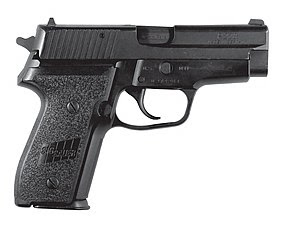
SIG Sauer P228/M11
|
|
| Type | Semi-automatic pistol |
| Place of origin | Germany Switzerland |
| Service history | |
| Used by | See Users |
| Production history | |
| Manufacturer | SIG Sauer |
| Variants | See Variants |
| Specifications | |
| Weight | 825 g (29.1 oz) (P228) 905 g (31.9 oz) (P229)[26] |
| Length | 180 mm (7.1 in)[26] |
| Barrel length | 99 mm (3.9 in)[26] |
| Width | 38 mm (1.5 in)[27] |
| Height | 137 mm (5.4 in)[27] |
|
|
|
| Cartridge | 9×19mm Parabellum (P228 & P229) .40 S&W, .357 SIG (P229 only) |
| Action | mechanically locked, recoil operated(DA/SA or DAO) |
| Feed system |
|
| Sights | Iron sights |
A compact version of the P226, the P228, is in use with various law enforcement agencies and also with the US military, where it is designated as the M11. The P228 has a shorter slide and barrel than the P226. Unlike the P226, the P228 is available only in 9×19mm Parabellum with a 13-round magazine, but can also use P226 15- or 20-round magazines. Aftermarket magazines extend the capacity of the P228 to 15 rounds.
From a distance, the P228 can be differentiated from the P226 by comparing the trigger guards (the P228’s is curved, while the P226’s is slightly hooked) and the barrel and slide lengths (the P228’s barrel 99 mm (3.9 in), thus having a corresponding shorter slide). Also in a side-by-side comparison the P228 would appear slightly shorter (15 mm (0.59 in) shorter) than the P226. The larger capacity P226 magazine can also be employed in the P228 although it extends from the base of the grip. Civilian sales of the P228 were discontinued with the introduction of 9mm chambering in the P229 but were recently reintroduced in limited quantities to civilians with an accessory rail and designated P228R.
The P229 is nearly identical to the P228, however its slide is made from milled stainless steel (versus the P228’s forged carbon steelslide) and is available in 9mm, .40 S&W, and .357 SIG. In the summer of 2012, SIG Sauer announced they were releasing the M11A1, which is essentially the milled-slide P229 chambered in 9mm with P228-labeled grips, a short reset trigger, SIGLITE tritium night sights, Mec-Gar 15-round magazines, and a military style smart tag and serial number. Later in 2012, Air Force M11b versions of the P228 were released for civilian sale. The M11 is to be replaced in the Army and Air Force through the Modular Handgun Systemprogram.[28] On January 19, 2017, it was announced that the SIG Sauer P320 Compact (M18) had been selected to replace the M11 as the U.S’s service pistol. One factor in winning the Modular Handgun System competition was the ability to employ 9mm Parabellum, .357 Sig or .40 S&W cartridges within the same basic frame.
P229[edit]
The P229 is a compact firearm often used for duty or concealed carry purposes. The standard version features a DA/SA trigger. The pistol has also been made available in a DAK (Double Action Kellermann) model, which is a DAO system with two trigger reset points, and a lighter, smoother pull than that of traditional DAO handguns. Most of the above-mentioned factory variants of the P226 are also available for the P229, including the Equinox option, Elite lineup, as well as a SAS GEN 2 model.
The P229 differs from its cousin the P226 in several respects, and was originally introduced to supplement and then replace the P228 by adding the .357 SIG and .40 S&W as available chamberings. The P229 was the first production handgun introduced that could chamber the .357 SIG round.[29] The P226 and P228 were originally manufactured using a stamped-steel slide on an aluminum alloy frame. The P229 consists of a CNC-milled stainless steel slide, typically colored black with a Nitron finish. The P229’s milled steel slide was introduced to handle the higher slide velocities created by the .357 SIG and .40 S&W loads, which the stamped slide of the P228 could not handle without the use of a much stiffer recoil spring. This would have made manual slide-retraction much more difficult and the use of a milled stainless slide (coupled with the new milling and stainless production capabilities found in the U.S. factory) with a standard weight recoil spring made more sense.
A standard weight recoil spring for the P229 is 71 N (16 lbf). A spring weight of 89 N (20 lbf) or higher would have been required if a stamped slide was used for the .40 S&W or .357 SIG chamberings. The SAAMI maximum chamber pressures of 9mm, 9mm +P, .40 S&W, and .357 SIG are as follows: 240 MPa (35,000 psi); 265 MPa (38,500 psi); 240 MPa (35,000 psi); and 280 MPa (40,000 psi). The slide on the P226 was redesigned in a similar fashion, and civilian sales of the P228 were discontinued in early 2005 due to declining sales and the advent of the P229 in 9mm. The P226 and P229 are both available with optional accessory rails and optional forged stainless steel frames.
The P229 can be chambered in .22 LR, 9mm, .40 S&W or .357 SIG. Changing between .40 S&W and .357 SIG is as simple as switching out the barrel; both calibers use the same magazine. Conversion barrels also allow a P229 or P226 to change between a .40 S&W/.357 SIG to a 9mm caliber. The 9mm model (both railed and non-railed) can be converted to .22 LR, but in the past its receivers were not designed to provide the space needed for handling the larger rounds of .357 SIG and .40 S&W. As SIG Sauer has slowly begun adopting the E2-style grip system across the P229 model range in 2011—a move similar to what is also happening to the larger P226—they have also begun using the .357 SIG/.40 S&W spec frame dimensions for their factory 9mm P229s, presumably to streamline the number of variations in parts needed to be kept in inventory. Although the manufacturer has announced that older-configuration magazines will continue to operate in the new receiver configuration, SIG Sauer has nonetheless revised new P229 9mm factory magazines to a design that is specific to the resized magazine well of the newly reconfigured receiver/frame. As a consequence, the newer magazines are not back-compatible, due to their larger width.
DAK Version[edit]
SIG released an altered version of the double-action only (DAO) pistols called the DAK (for Double Action Kellermann, after the designer of the trigger system, Harald Kellermann of Eckernförde, Germany).[30] The DAK capability is available in 220, 226, 229 and 239 models. When firing the pistol the first trigger pull is 29 N (6.5 lbf) (compared to 44 N (10 lbf) for the standard DAO). After the pistol fires and the trigger is released forward, the trigger has an intermediate reset point that is approximately halfway to the rest position. The trigger pull from this intermediate reset point is 38 N (8.5 lbf). If the trigger is released all the way forward, this will engage the primary trigger reset and have a trigger pull of 29 N (6.5 lbf). To engage the intermediate reset, the trigger must be held to the rear while the slide is cycled, either manually or by the recoil of a round being fired. The pistol can be cocked by pulling the trigger just past the trigger reset, then stopping, then releasing.
The United States Coast Guard began switching over to the SIG P229R-DAK in .40 S&W in 2004, beginning with the first shipment of 14,000 handguns from the production facility. According to producer site more than 3 million rounds were fired during U.S. Government testing.[31] The “R” denotes the accessory rail ahead of the trigger guard.
P224[edit]
The P224 is a subcompact variant of the compact P229. When the new design was announced in January 2012, the line was chambered only in .357 SIG and .40 S&W, and came only with a DAK (Double Action Kellermann) trigger. SIG announced that they would expand the line to include a DA/SA (Double Action/Single Action) trigger, a SRT DA/SA (Short Reset Double/Single Action) and would add a 9mm version in the future. As of 2013, the P224 was available in the original two calibers and the DAK trigger with four factory variants; SIG Anti-Snag (SAS), Nickel, Extreme and Equinox.[32] The pistol has since been discontinued.
The P224 is 170 mm (6.7 in) long, compared to 180 mm (7.1 in) for the P229. It is also about 23 mm (.9 in) shorter at 110 mm (4.5 in) and 5.1 mm (.2 in) thinner at 33 mm (1.3 in) than the P229. It weighs 190 g (6.6 oz) less than the alloy frame P229 and 420 g (14.8 oz) less than the stainless steel frame p229. The standard P224 magazine capacity is 10 rounds .357 SIG/.40 S&W and 12 rounds in 9mm.[33] It will also accept newer P229 magazines, which have a higher capacity.
Users[edit]
See also[edit]


See what I mean by teachers always repeating themselves?


In closing this Oldie but Goody!
Early one morning, a mother went in to wake up her son.
Wake up son, It’s time to go to school!’
But why, Mom? I don’t want to go.’
Give me two reasons why you don’t want to go.’
Well, the kids hate me for one,
and the teachers hate me, too!’
Oh, that’s no reason not to go to school.
Come on now and get ready.’
Give me two reasons why I should go to school.’
Well, for one, you’re 52 years old.
And for another, you’re the Principal!












